Chemistry and Chemists № 2 2025
Journal of Chemists-Enthusiasts
| Content | Chemistry experiments - video | Physics experiments - video | Home Page - Chemistry and Chemists |
|
Chemistry and Chemists № 2 2025 Journal of Chemists-Enthusiasts |
Experiments with Magnetite (Fe3O4) - pt. 1, 2 Chemist |
|
Having noticed a mistake in the text, allocate it and press Ctrl-Enter
Iron Oxide Pigment and Hydrochloric Acid - Part 1
Thermite combustion is one of the most fascinating chemical reactions. Beyond its use in spectacular demonstrations, it has numerous practical applications. Thermite mixtures are used for metal and alloy production, welding, and as incendiary compounds in military applications.
Эксперименты с магнетитом (Fe3O4) Железооксидный пигмент и соляная кислота - часть 1 There are many known variations of thermite. The classic thermite mixture consists of aluminum powder combined with iron oxides (FeO, Fe3O4, and Fe2O3). I must admit - despite many years in chemistry, I have never actually seen thermite burning in person, only in photographs and videos. I decided it was time to correct this injustice. First, I needed to gather all the necessary materials for the experiment. Instead of reagent-grade iron oxide, a colleague suggested using a black pigment based on magnetite (Fe3O4), which was recently purchased from a supermarket. The pigment appeared as a black, smearable powder, though it looked brown in photographs. My colleague claimed that magnetite was the main component. This compound, an iron (II, III) oxide, is one of the most common natural iron minerals. Unlike other iron oxide - iron(II) oxide (FeO) and iron(III) oxide (Fe2O3) - magnetite is strongly attracted to a magnet. I first examined the pigment's packaging. Under the "Composition" section, it simply stated: "Iron oxide pigment" - and nothing more. The label also mentioned that the pigment was intended for use in concrete, but provided no details about its specific composition or purity. So, why was my colleague convinced that the jar contained magnetite? This assumption needed experimental verification. I poured hydrochloric acid (13.5% concentration) into a glass, added a small amount of the iron oxide pigment, and stirred. A black suspension formed. Over time, the solid particles settled at the bottom, while the solution remained colorless. As is well known, iron oxides dissolve in hydrochloric acid, forming colored chloride solutions: divalent iron (Fe2+) produces a green solution, while trivalent iron (Fe3+) results in a brown one. However, despite the passage of time, my solution remained colorless. Could it be that the pigment wasn't actually magnetite? I felt quite frustrated - not because the pigment might be fake, but because my colleague tends to be overly trusting. Despite being a qualified chemist, he often takes people at their word instead of performing basic verification. Perhaps the manufacturer was selling coal powder or some other inexpensive material under the guise of iron oxide. As is well known, coal is not attracted to a magnet. To test the pigment, I brought a weak ferrite magnet near the jar. To my surprise, the magnet was strongly attracted to the pigment. This confirmed the presence of magnetite in the jar. However, it could have been mixed with clay, earth, or other foreign materials. I needed to dissolve a sample in acid to estimate the amount of insoluble residue. While I was testing the pigment with the magnet, I noticed that the hydrochloric acid in the glass had turned a greenish-yellow - indicating that the iron oxide had begun to dissolve. I covered the glass with a Petri dish and periodically stirred the mixture. Over time, the solution became increasingly yellow, but even after three hours, much of the solid phase remained undissolved. I left the glass over the weekend and returned to the lab three days later. By then, the liquid had turned into an orange-brown solution with a small amount of brown sediment. Conclusion. The iron oxide pigment was attracted to a magnet and dissolved almost completely in hydrochloric acid, forming an orange-brown solution. These observations strongly suggest that the pigment primarily consists of iron(II,III) oxide (Fe3O4, also written as FeO·Fe2O3, magnetite). Later, my colleague informed me that he had tested the pigment with a magnet before suggesting it for experiments. He also noted that magnetite dissolves in acids slowly. This reminded me of an experience from my graduate studies when I tried dissolving a similar oxide - cobalt(II,III) oxide (Co3O4) - in dilute sulfuric acid. The process was extremely slow, requiring both heating and the addition of hydroxylamine (NH2OH) as a reducing agent. |

Iron Oxide Pigment and Hydrochloric Acid |
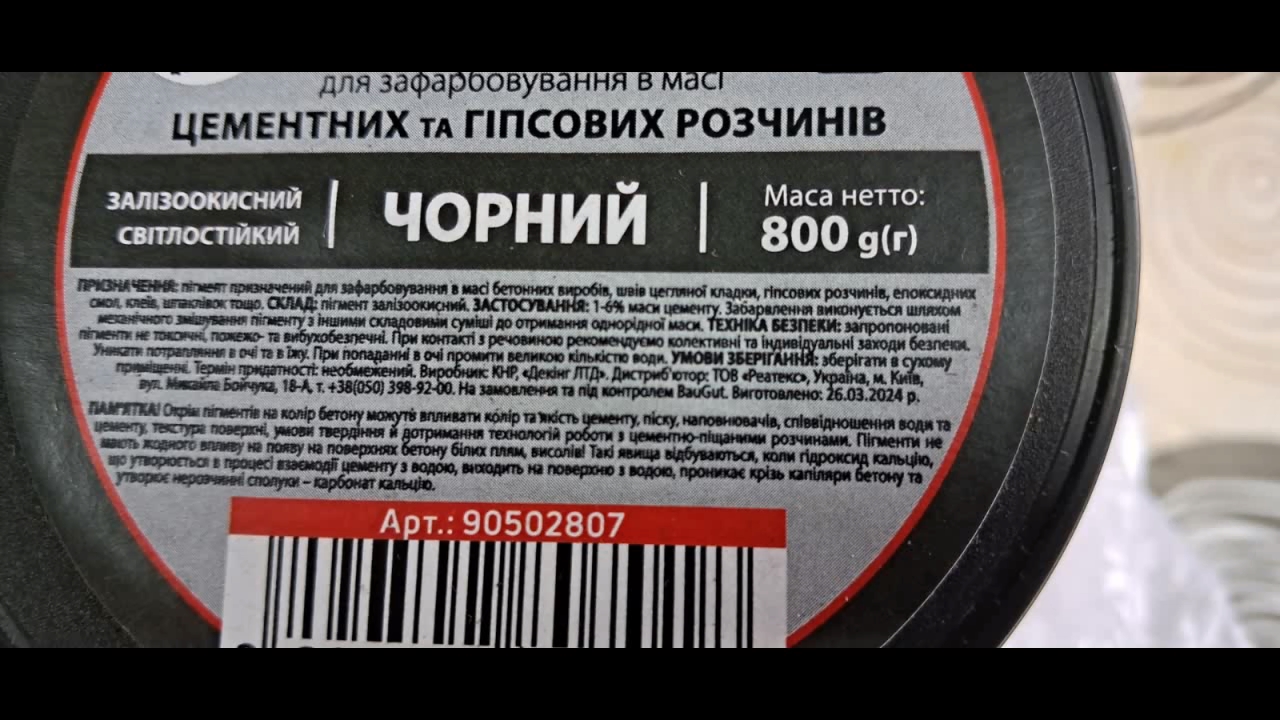
|
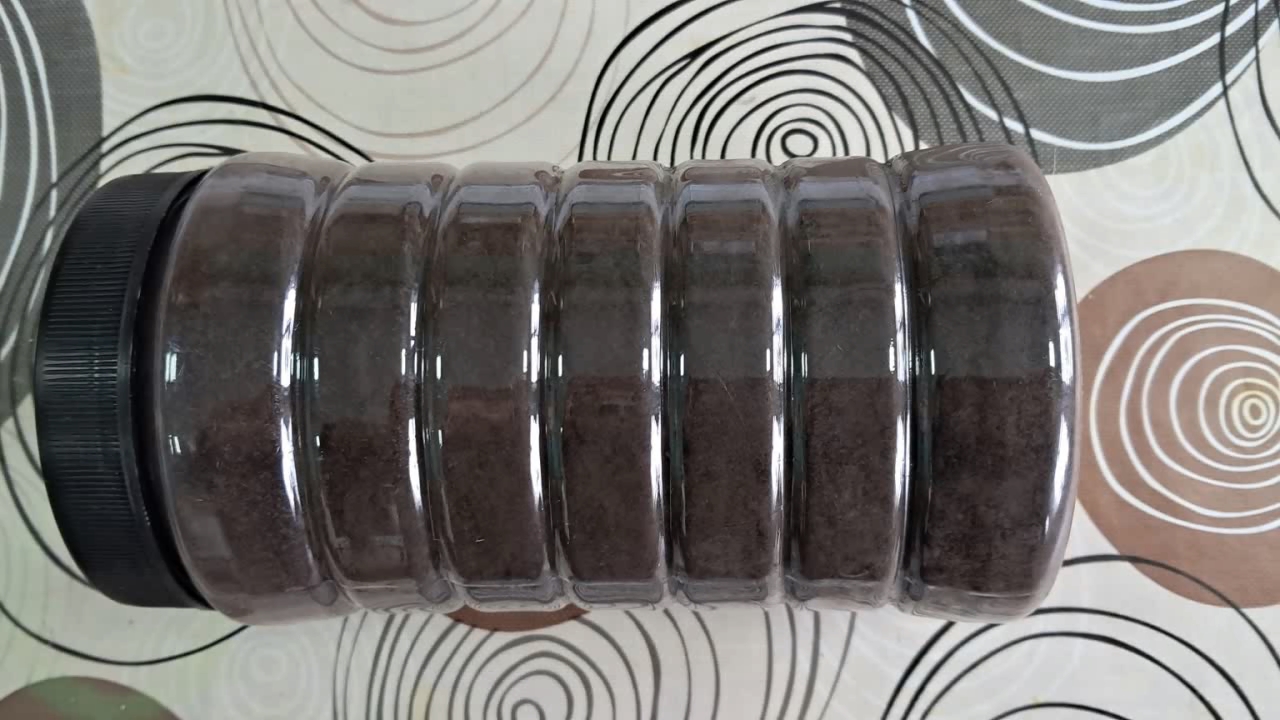
|

|
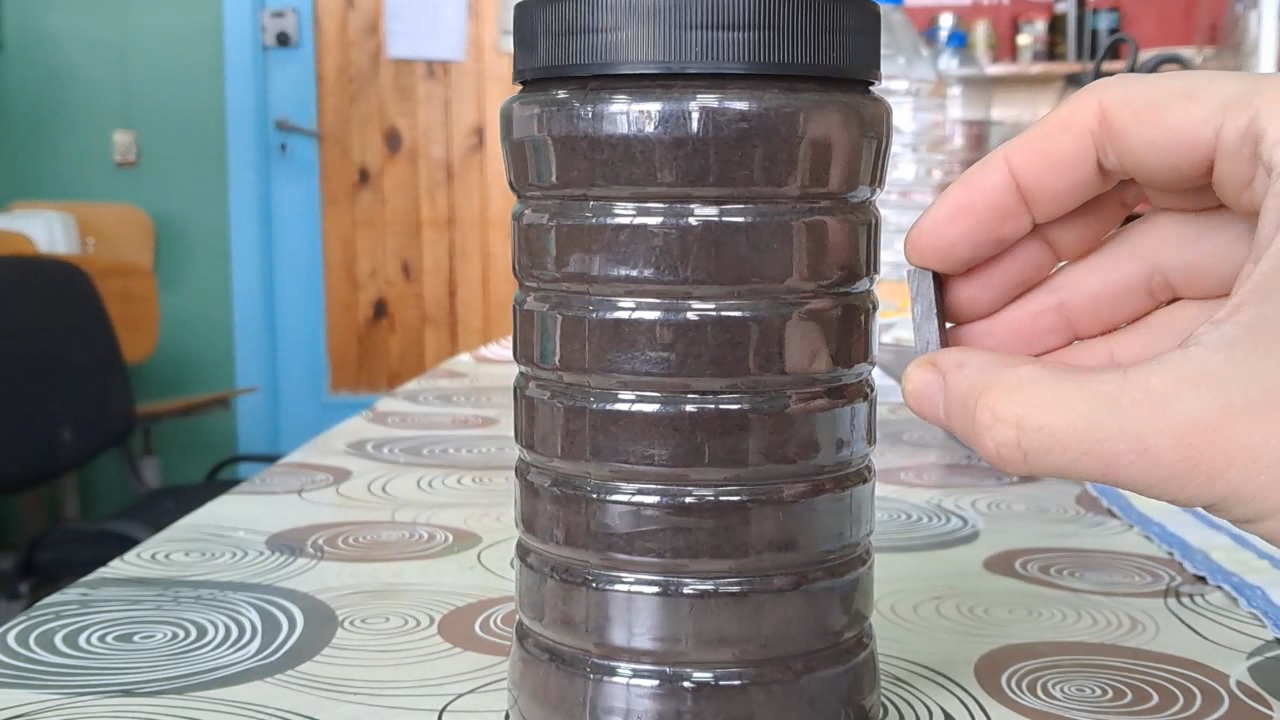
|
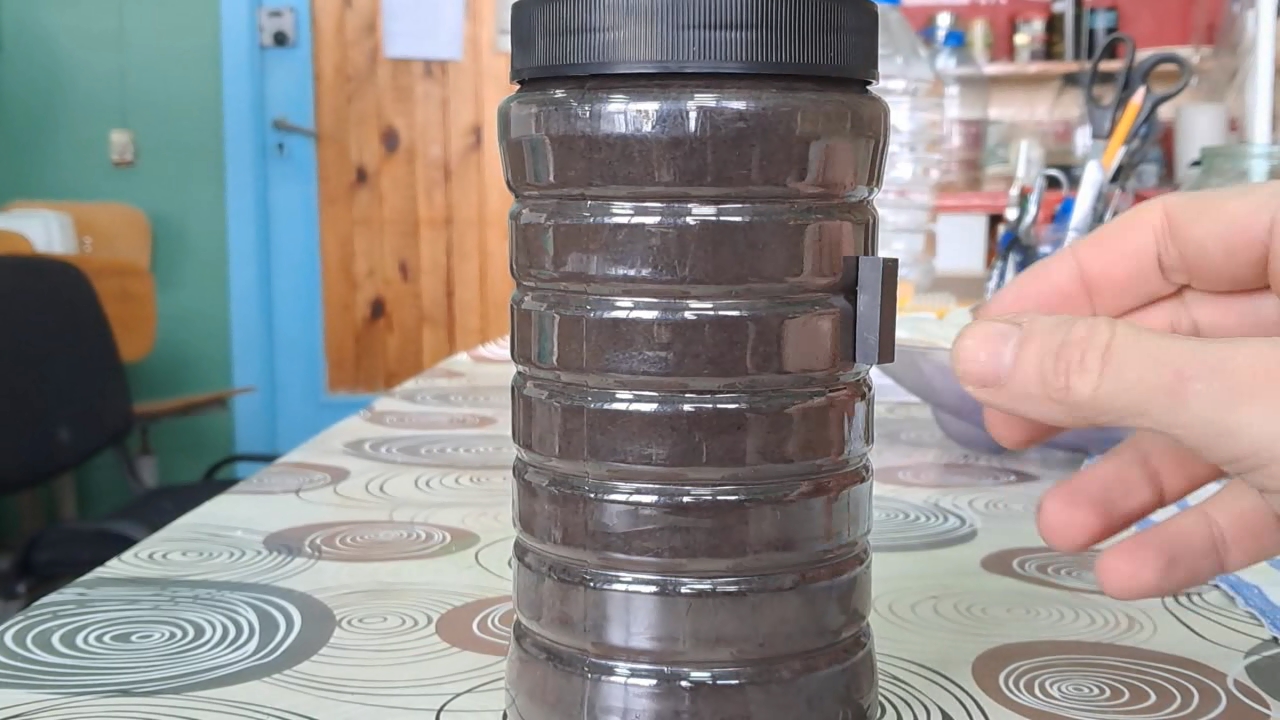
|
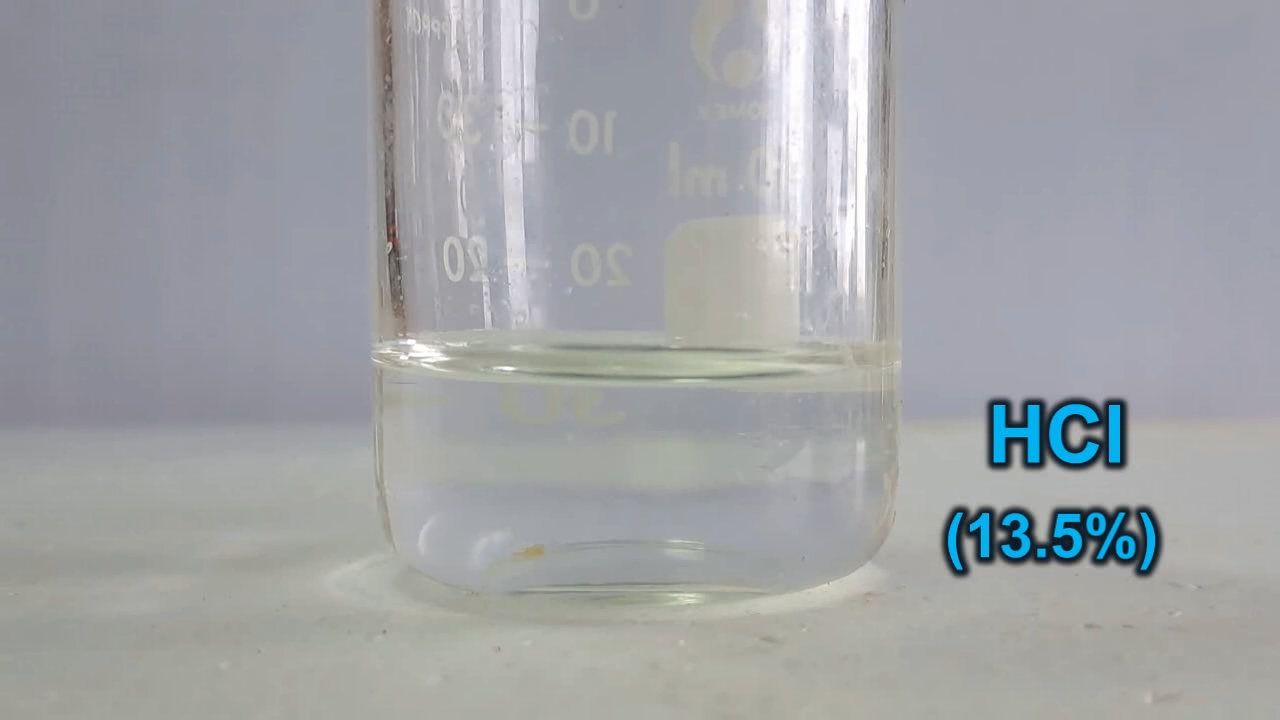
|
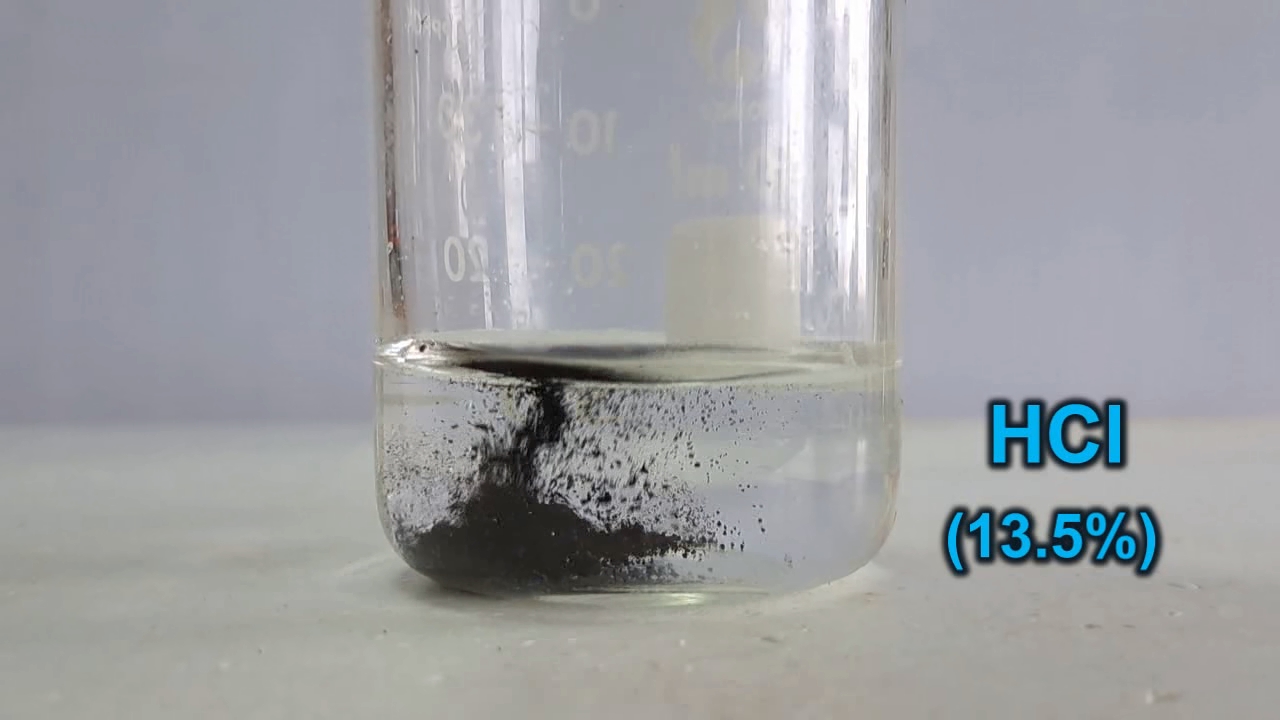
|

|
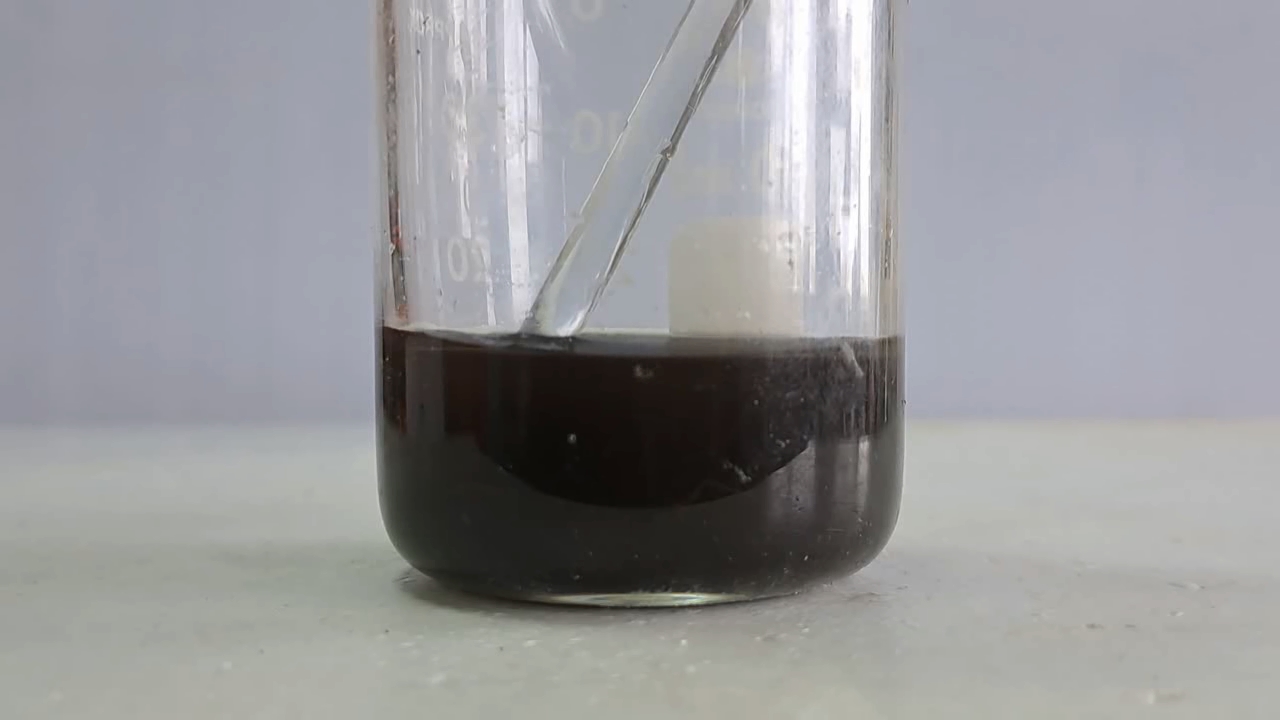
|

|
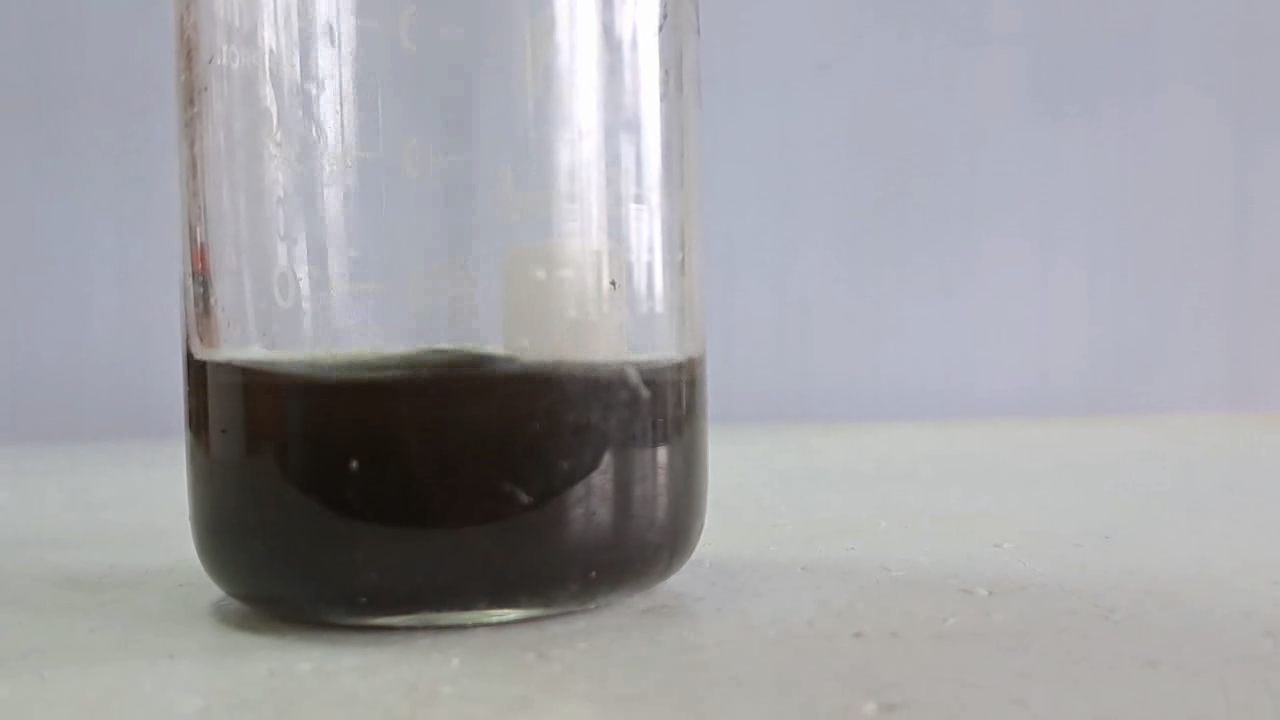
|
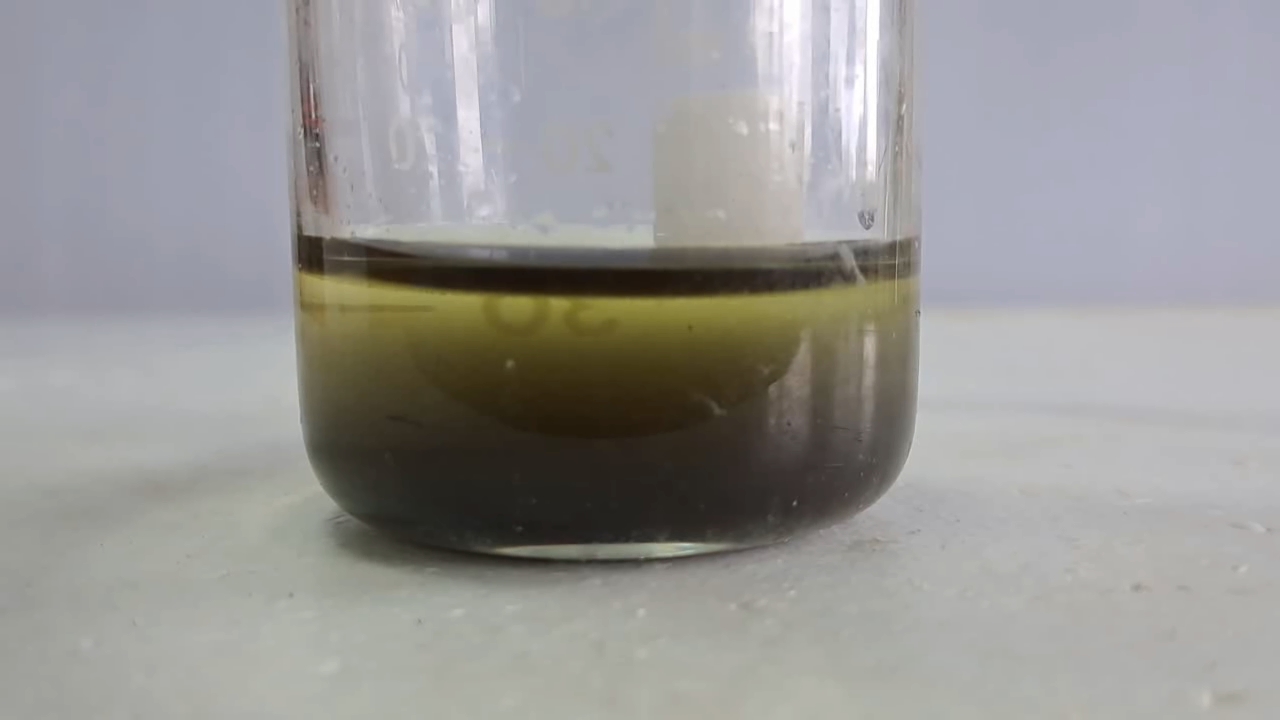
|
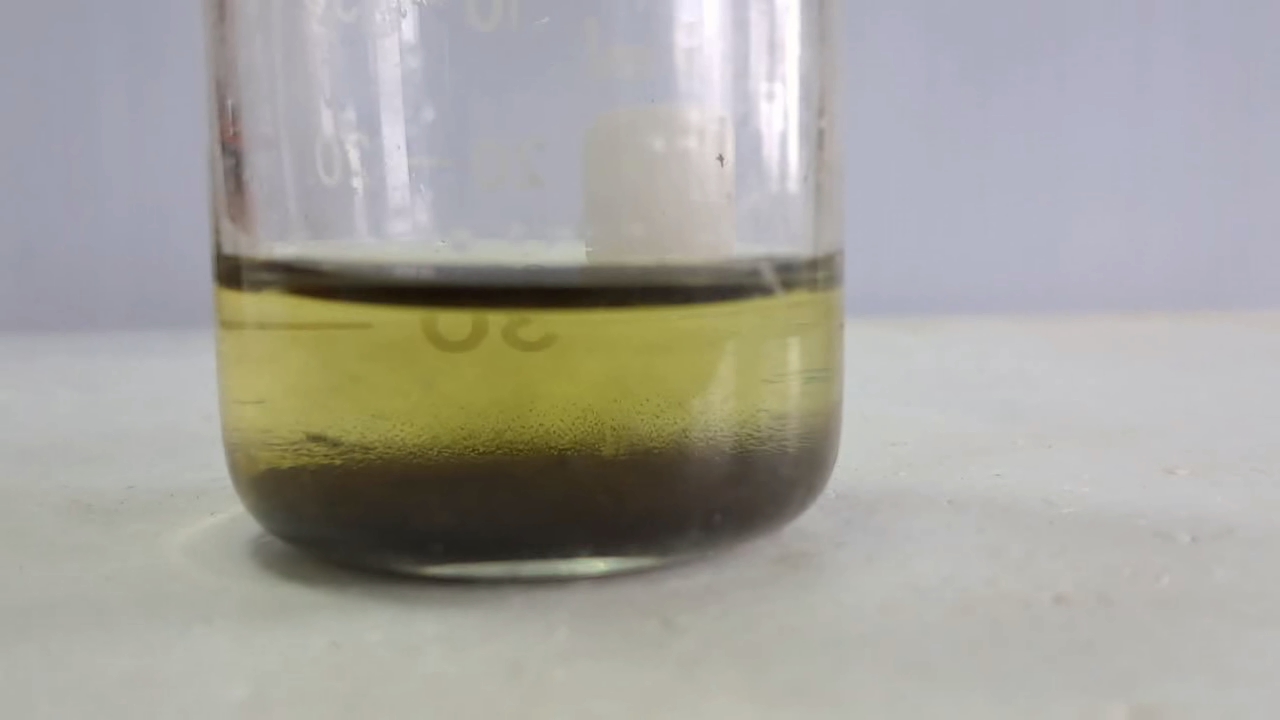
|
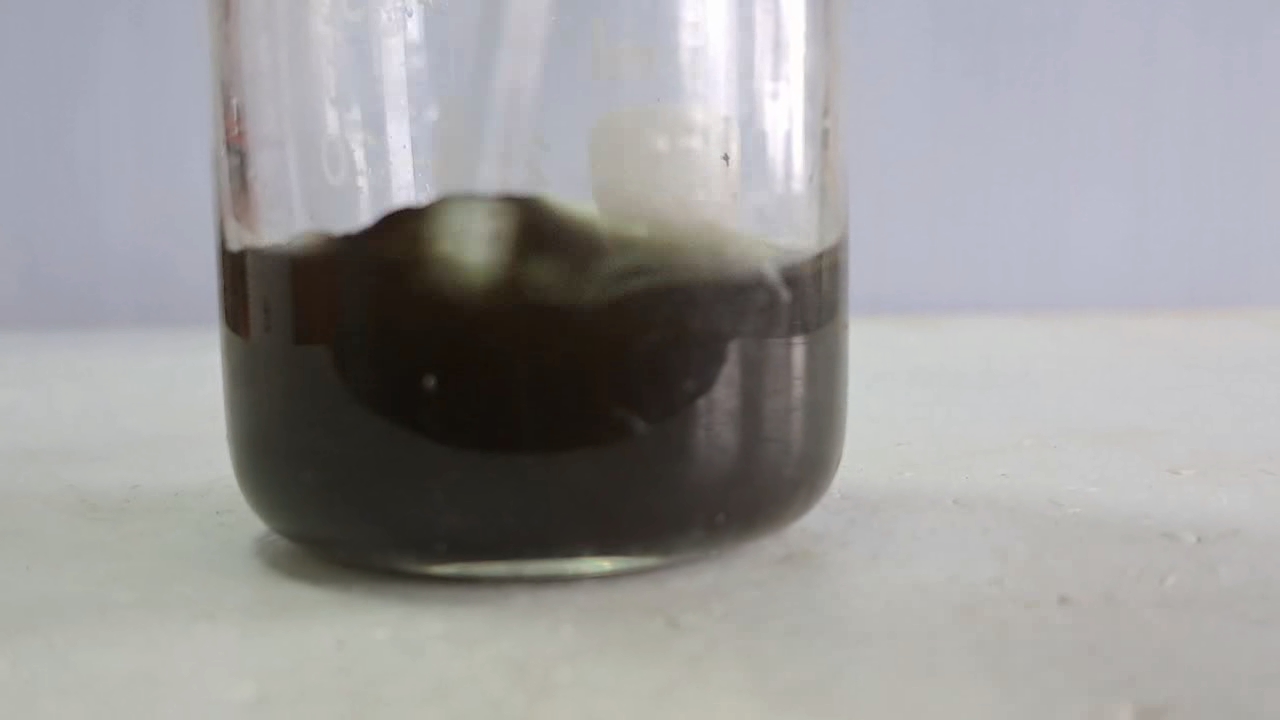
|
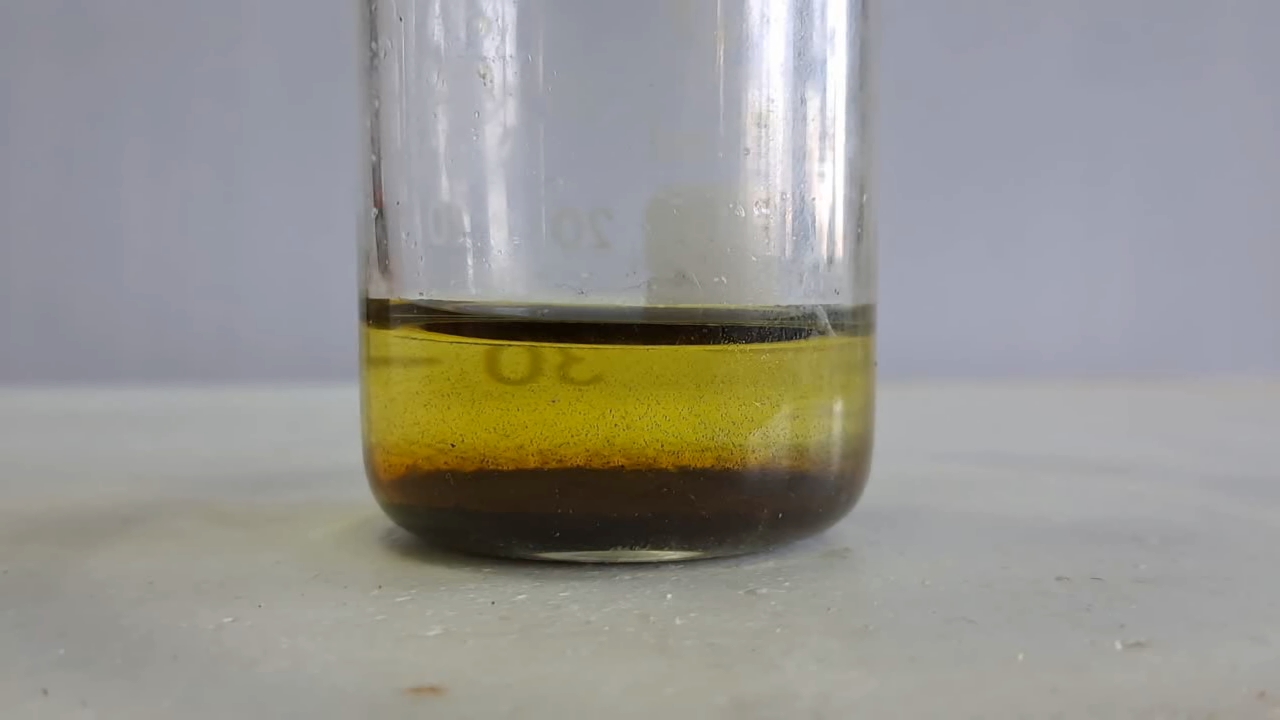
|

|
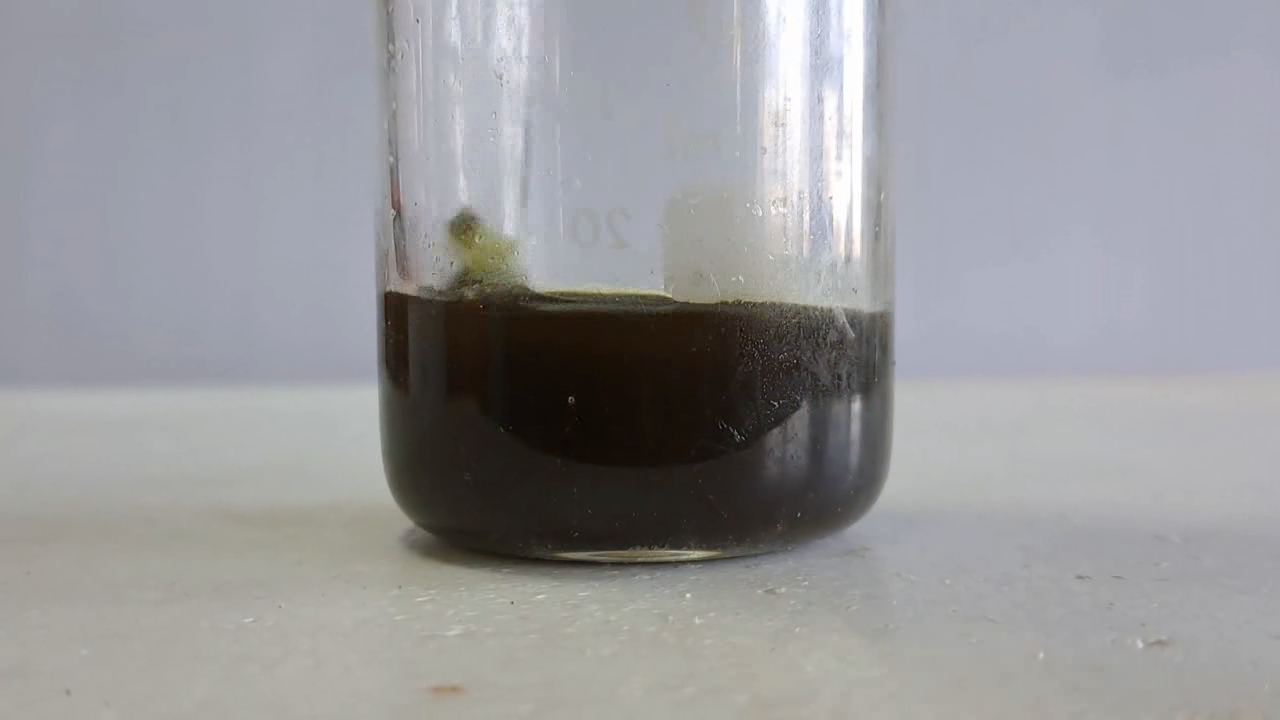
|
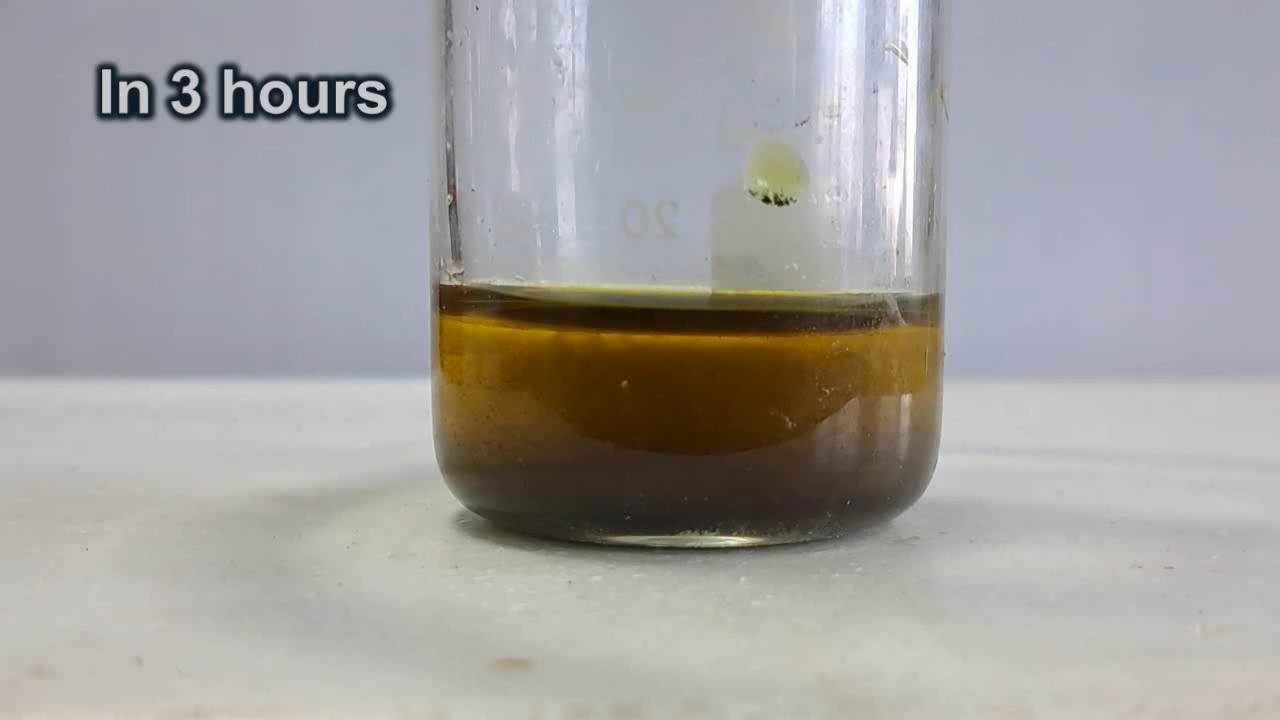
|
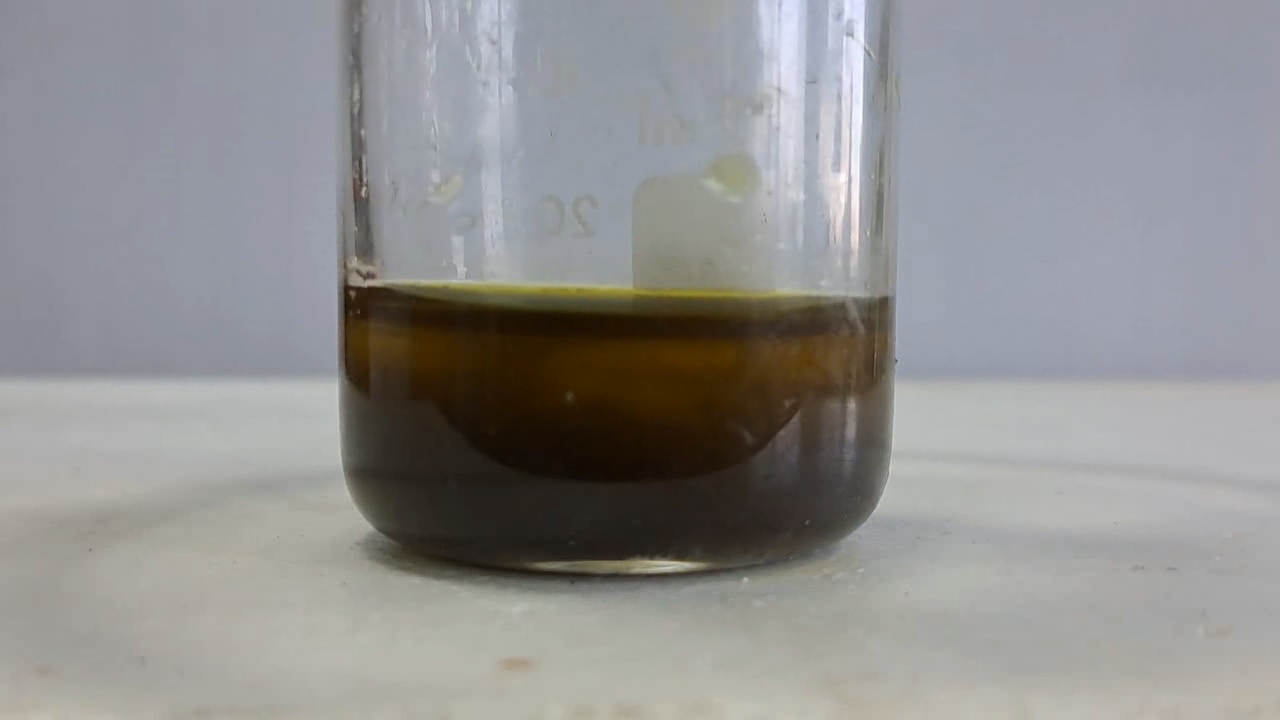
|
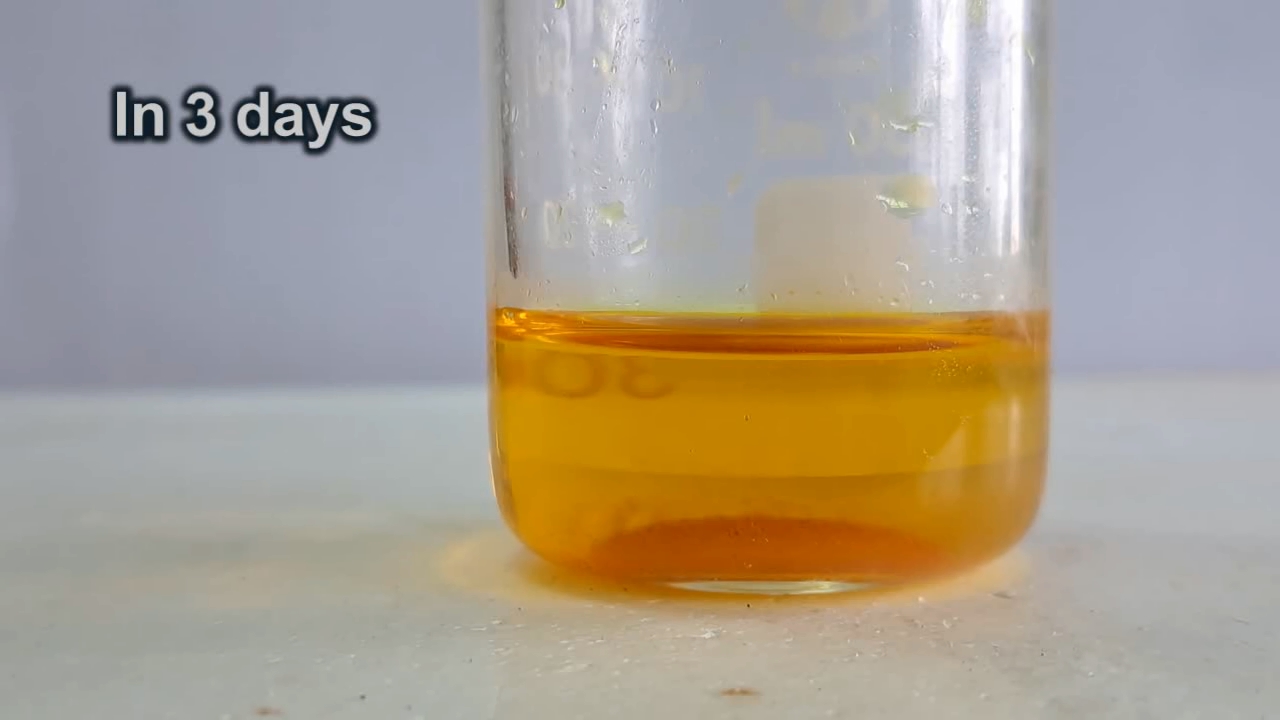
|
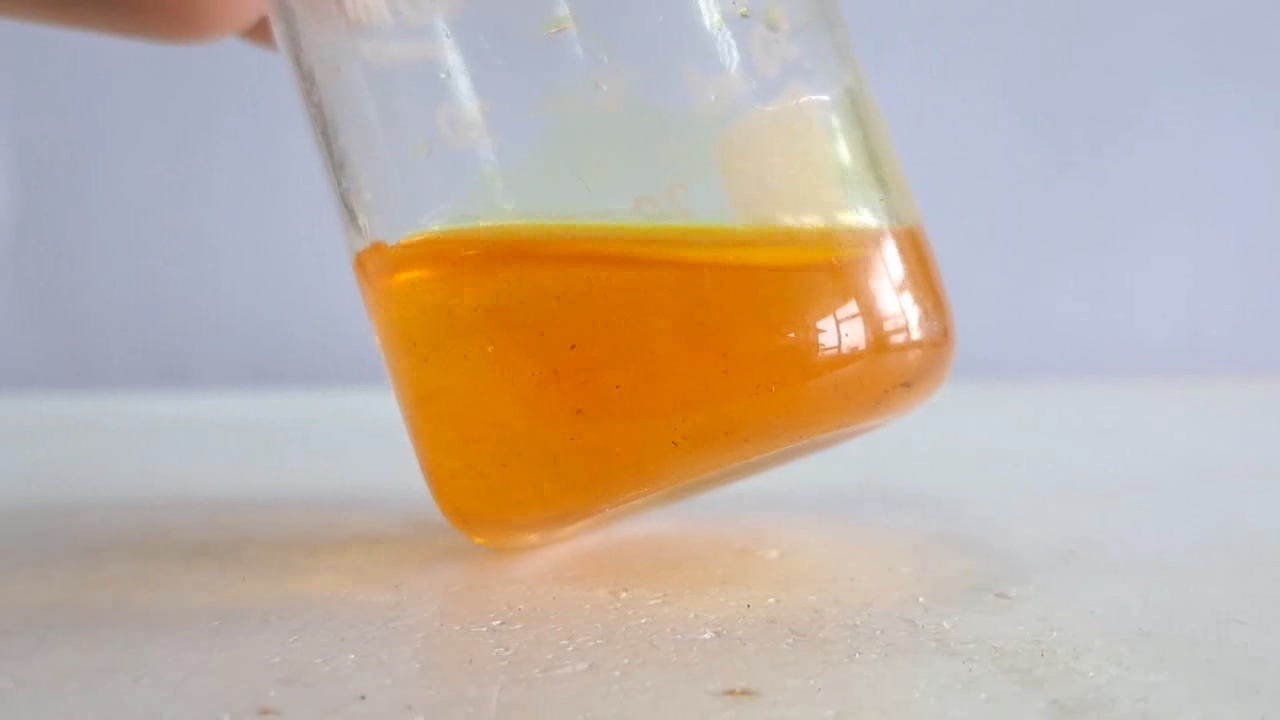
|
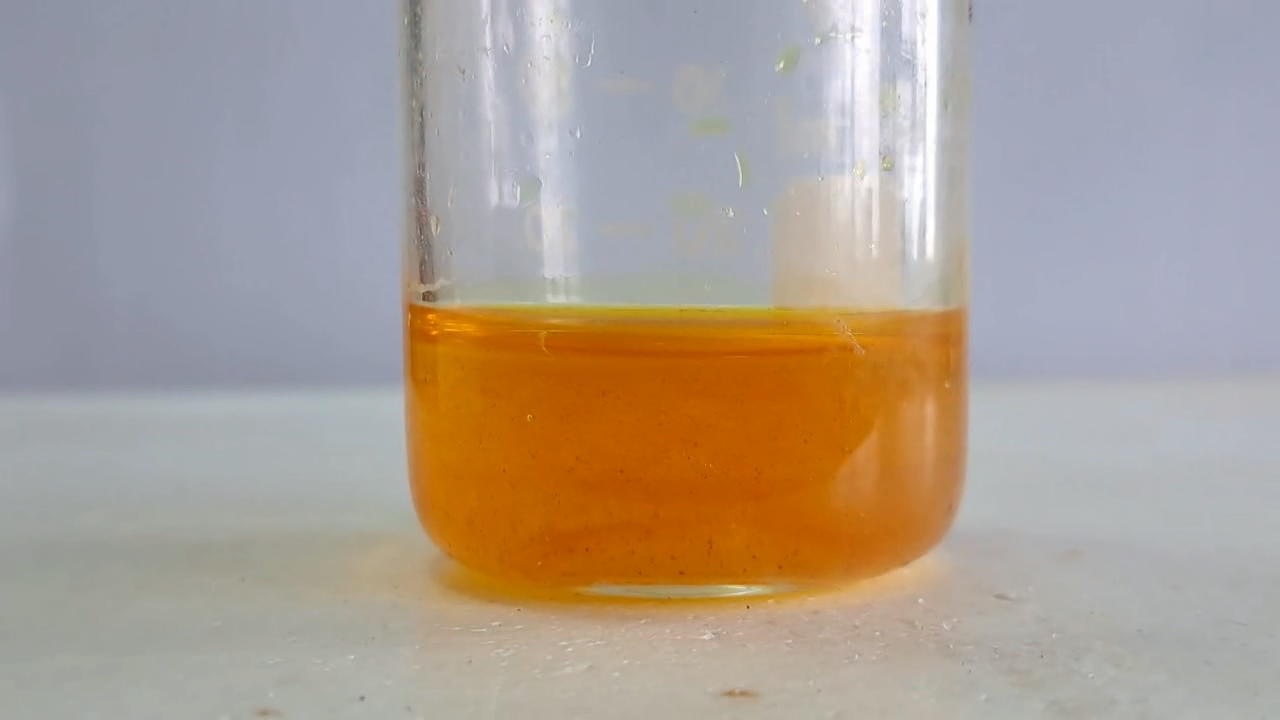
|

|
|
Having noticed a mistake in the text, allocate it and press Ctrl-Enter
Would You Like More Tea? Black Tea and Iron Chlorides - Part 2
A five-liter jar of water sits on the table, with a cup of black tea beside it. I pour the tea into the jar - the water turns brown. Would you like more tea? I take a glass containing exactly the same tea and add a few milliliters to the jar. Visually, nothing changes. But as soon as I stir with a Teflon stick, the liquid instantly turns black. In a thin layer, the solution appears dark purple.
Хотите еще чаю? Черный чай и хлориды железа - часть 2 The thing is, the glass did not actually contain tea, but a brown solution of iron(II) and iron(III) chlorides, obtained in the previous experiment by dissolving magnetite in hydrochloric acid. However, the cup did contain real black tea. The two liquids appear nearly identical. Tea contains tannins, which are plant-based polyphenols. Phenols form intensely colored complexes with iron salts. In the case of tannins, these complexes appear dark purple. I have performed this experiment many times - it is one of the most well-known chemical demonstrations. I would not have repeated it had the previous experiment not produced a solution of iron chlorides, and had I not happened to have a cup of tea at hand. However, this time, I did not stop at the standard procedure. I poured the dark purple solution from the jar into a 250 mL glass and added hydrochloric acid (13.5% concentration). The lower portion of the solution turned light brown. After stirring, the entire solution became light brown. Next, I added hydrochloric acid directly to the jar containing the dark purple solution - first 50 mL, then another 25 mL. The solution near the bottom gradually changed from dark purple to light brown. Stirring the contents of the jar turned the entire solution light brown. The purple iron complex had been destroyed. Finally, I dissolved 30.8 g of sodium hydroxide in a glass (to neutralize the hydrochloric acid and create a highly alkaline solution). I added this sodium hydroxide solution to the jar and stirred. The liquid in the jar turned dark brown, almost black. No precipitate of iron(III) hydroxide was observed. |
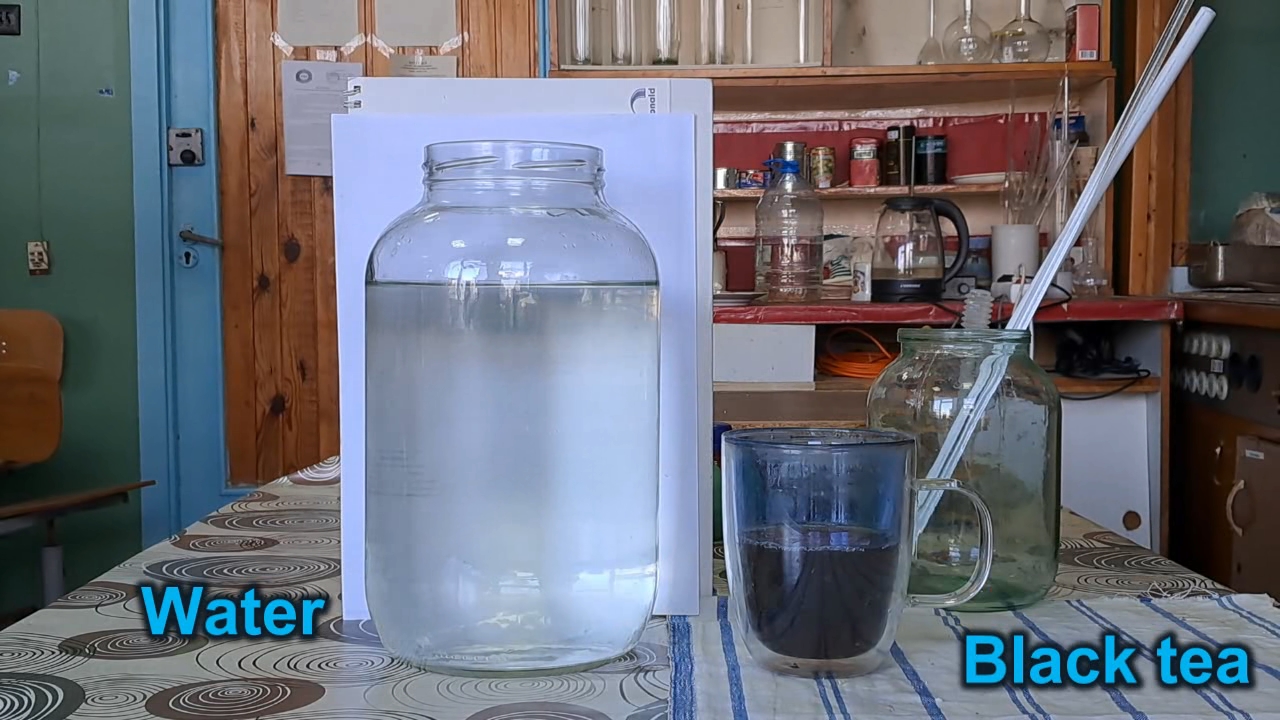
Would You Like More Tea? Black Tea and Iron Chlorides |
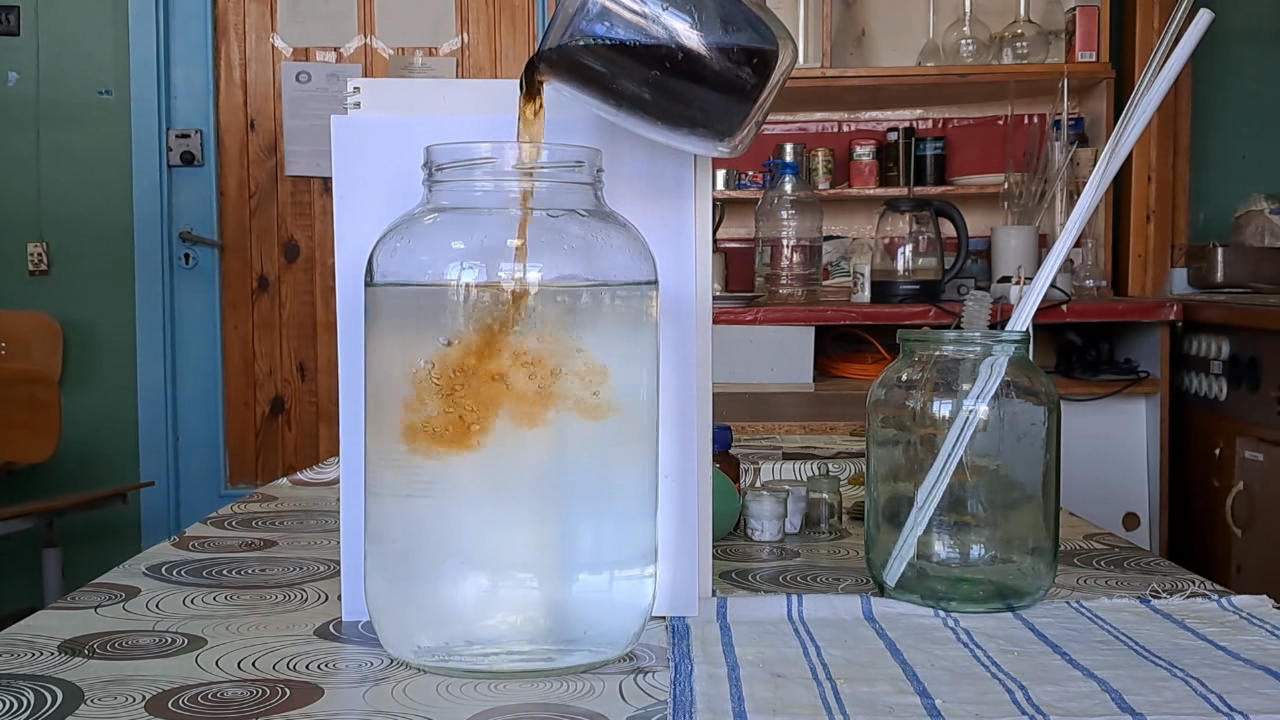
|
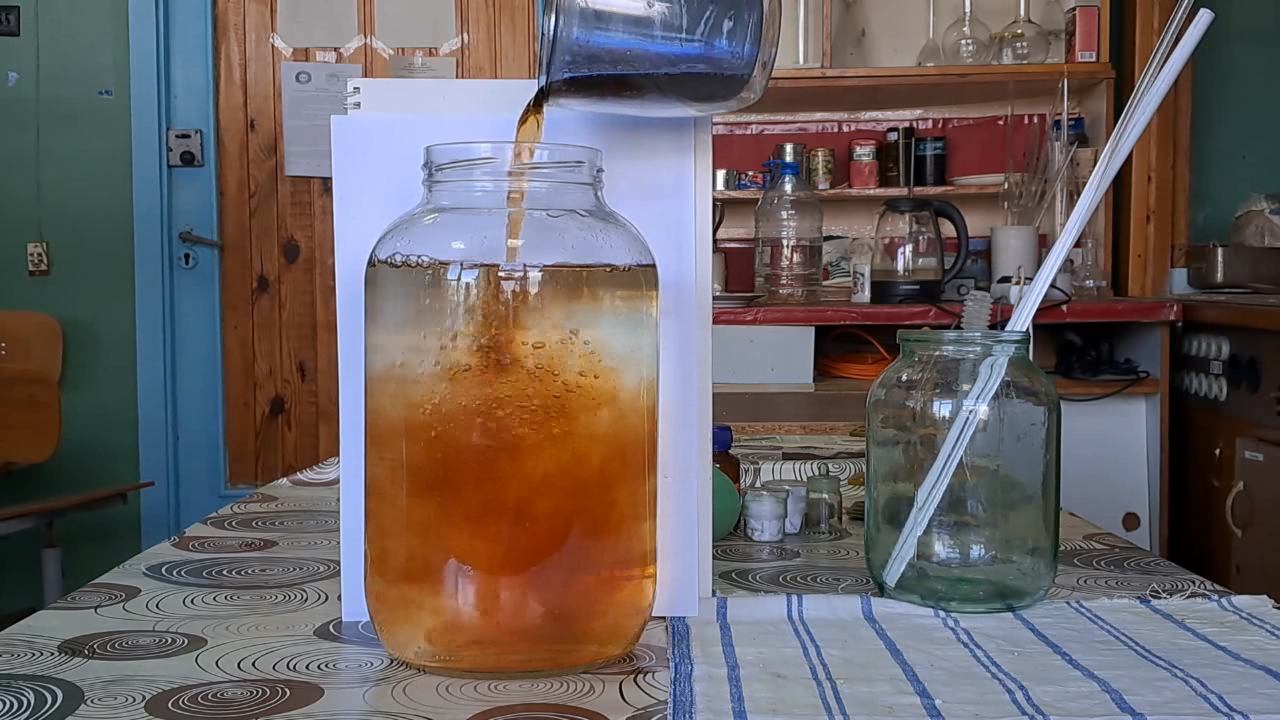
|
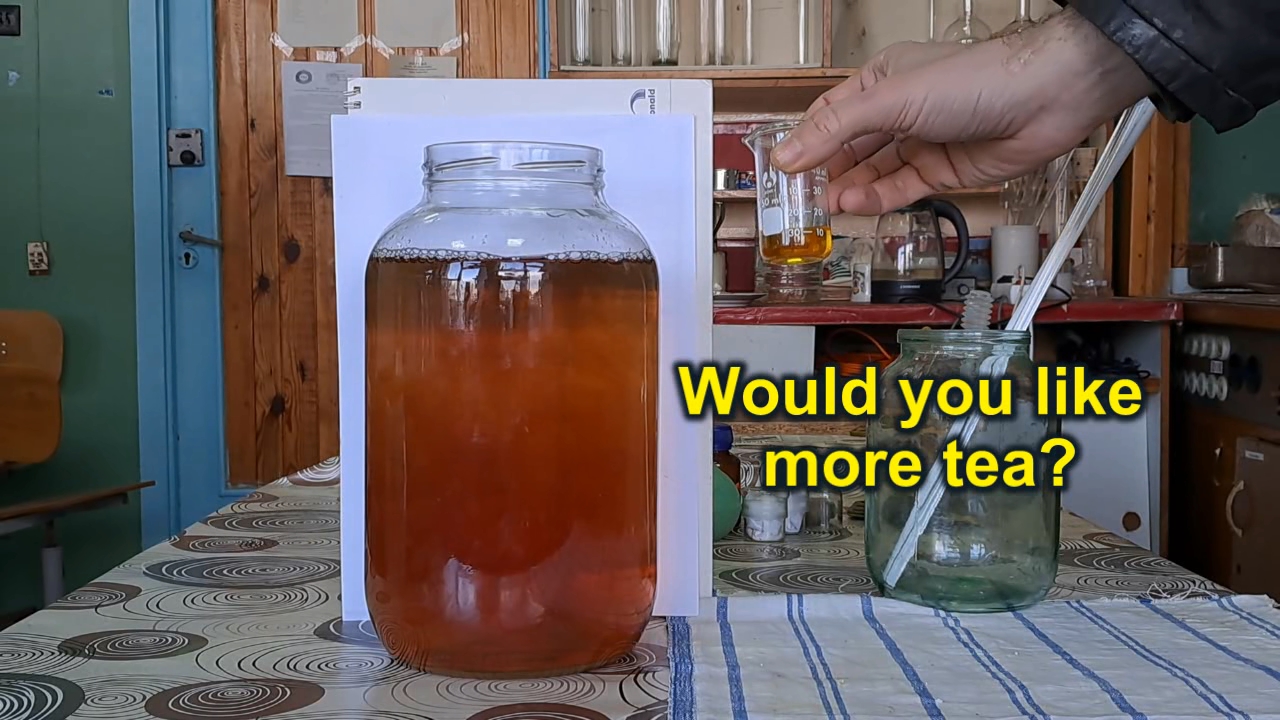
|
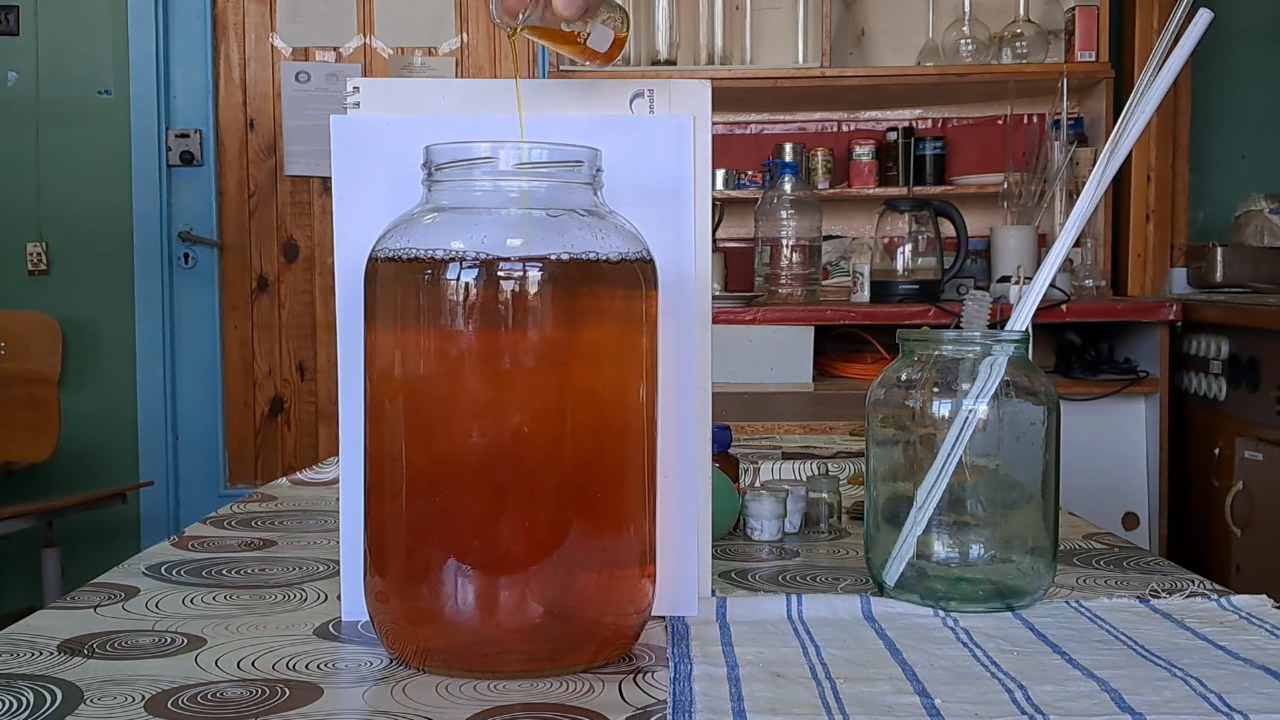
|

|
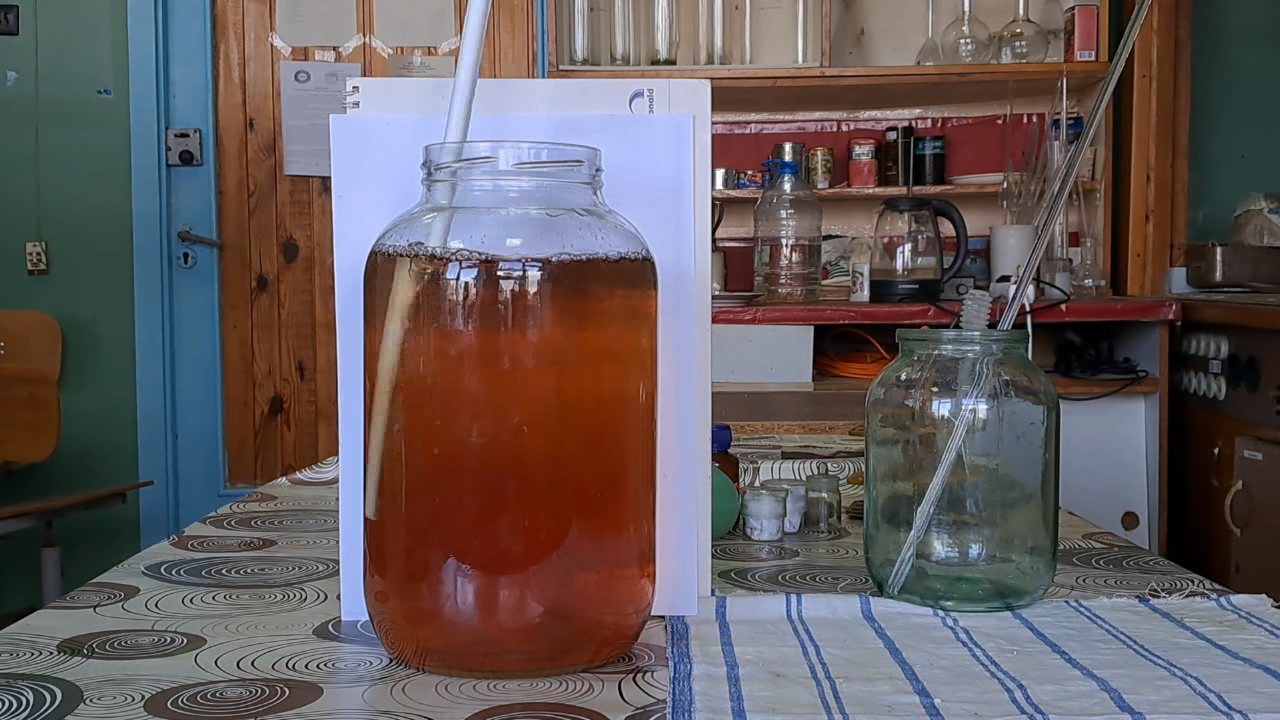
|
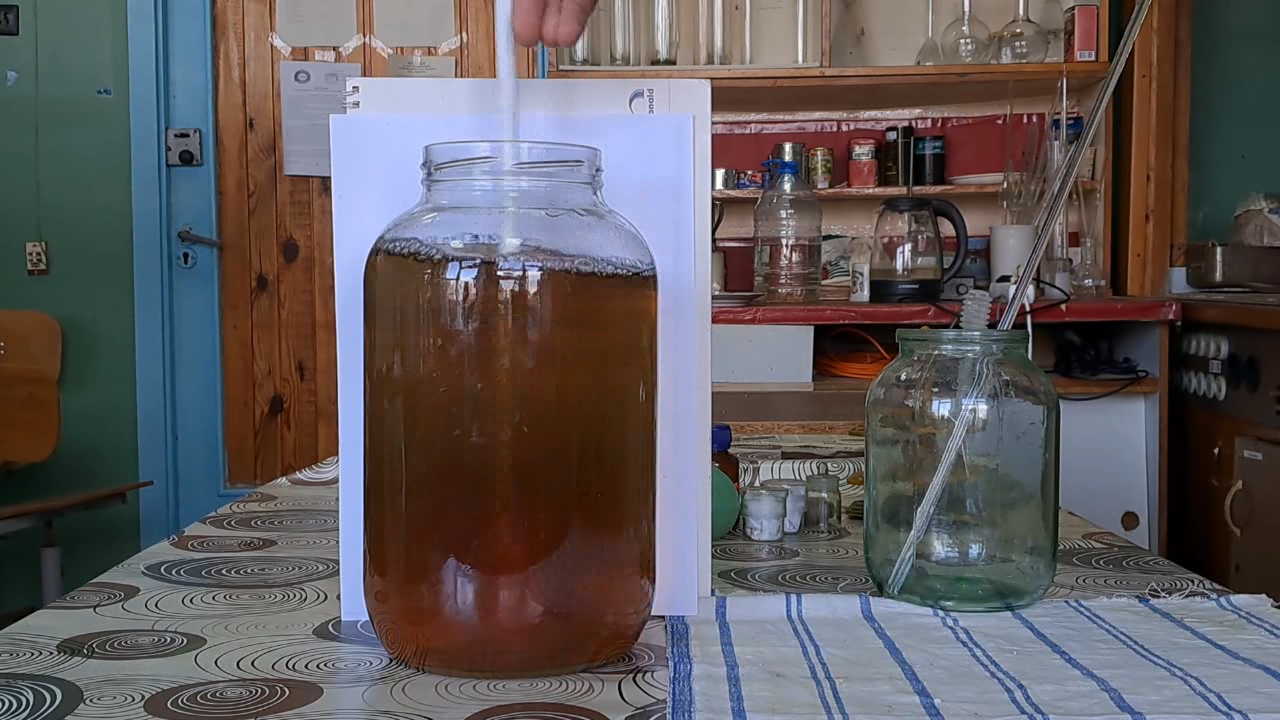
|
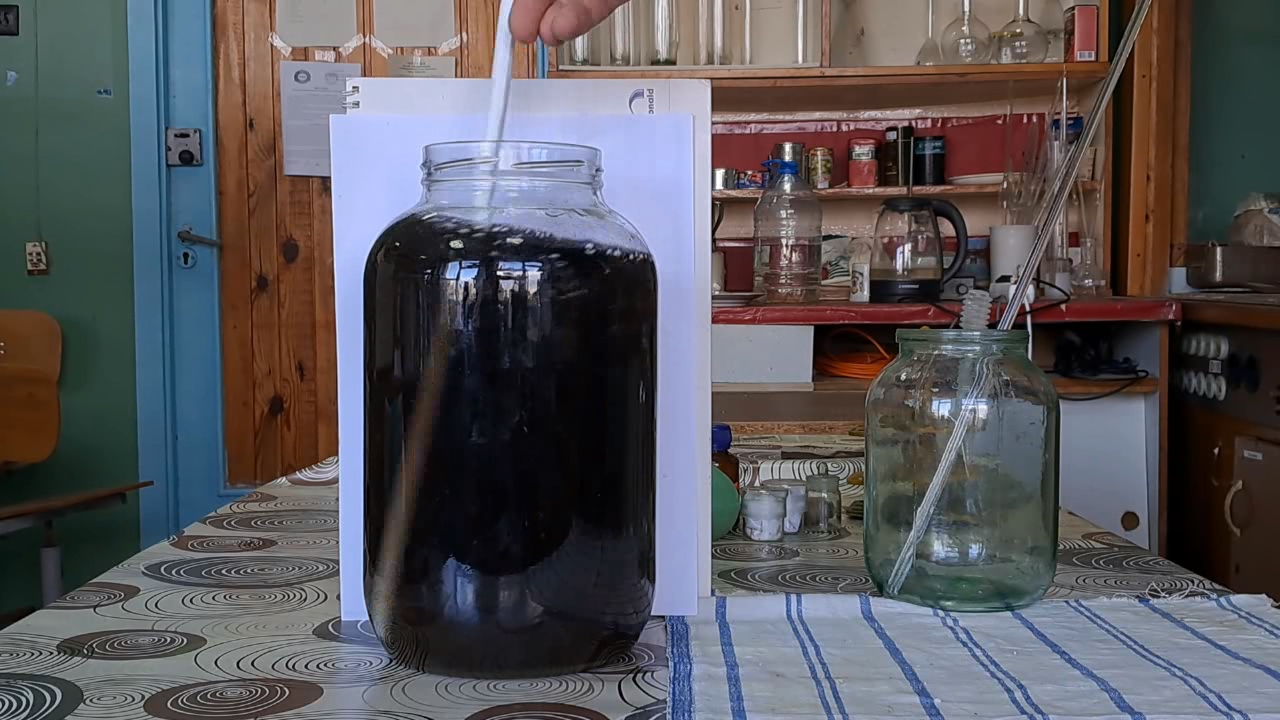
|
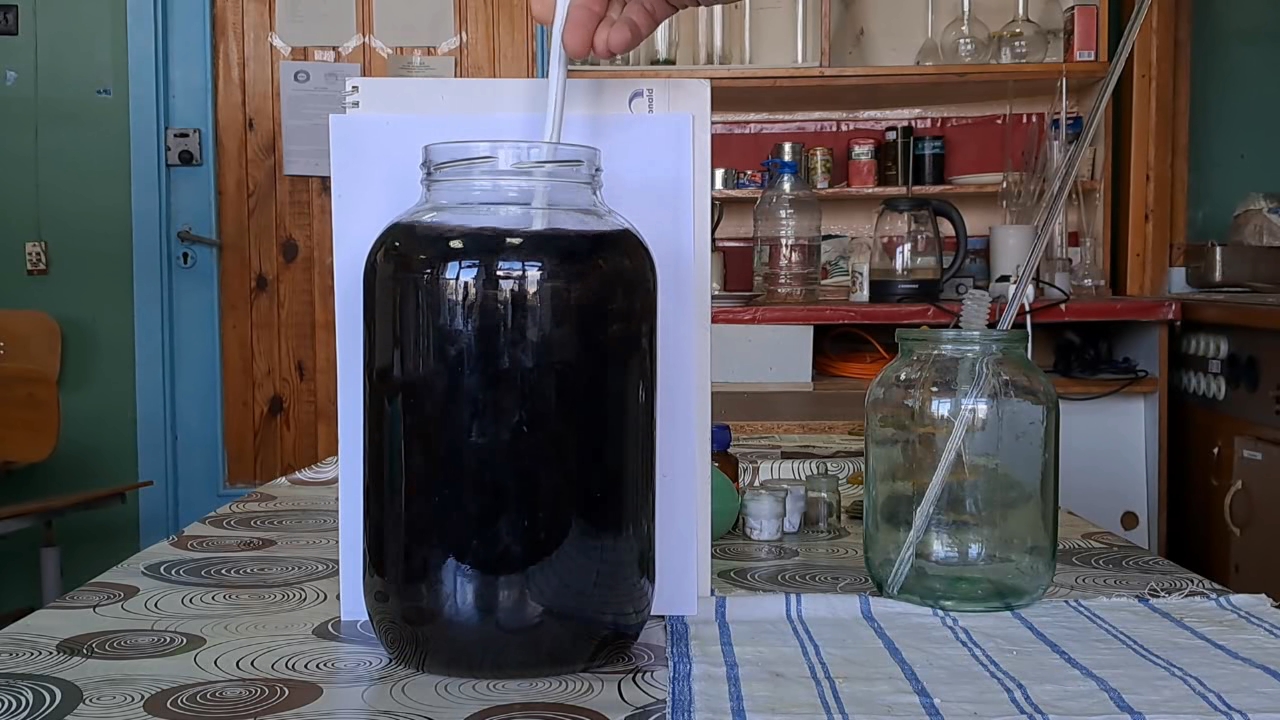
|

|
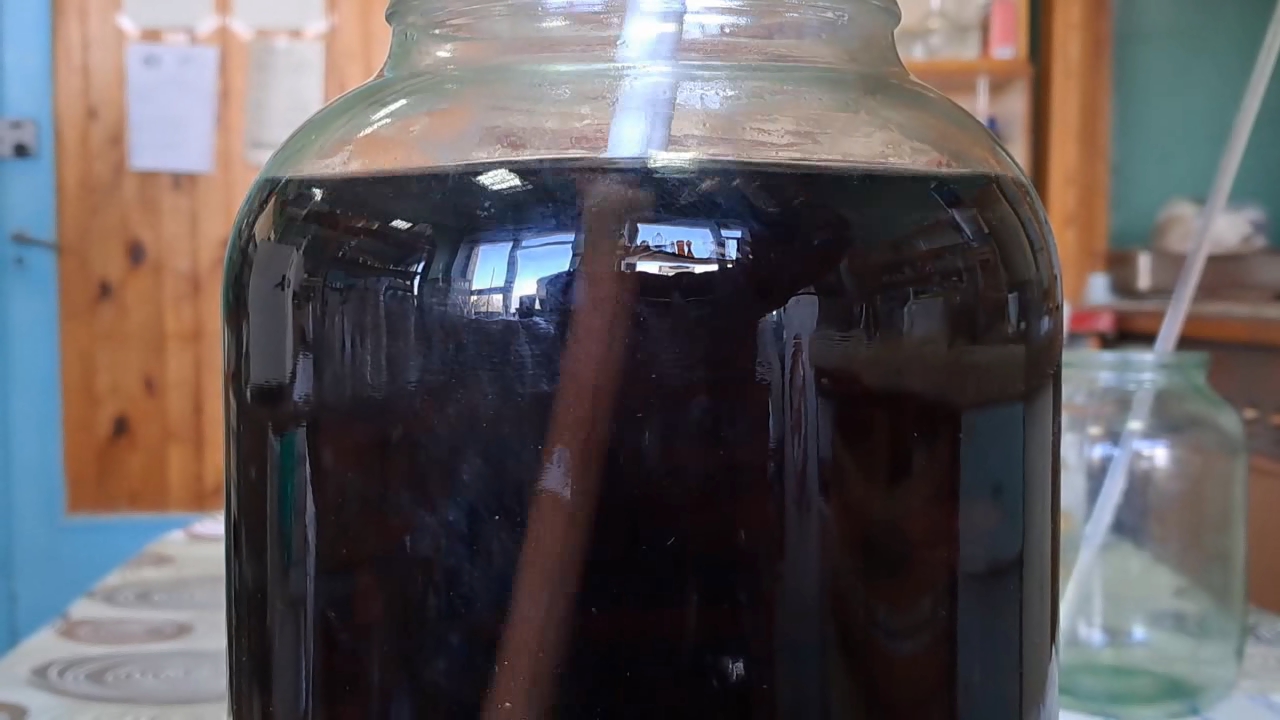
|
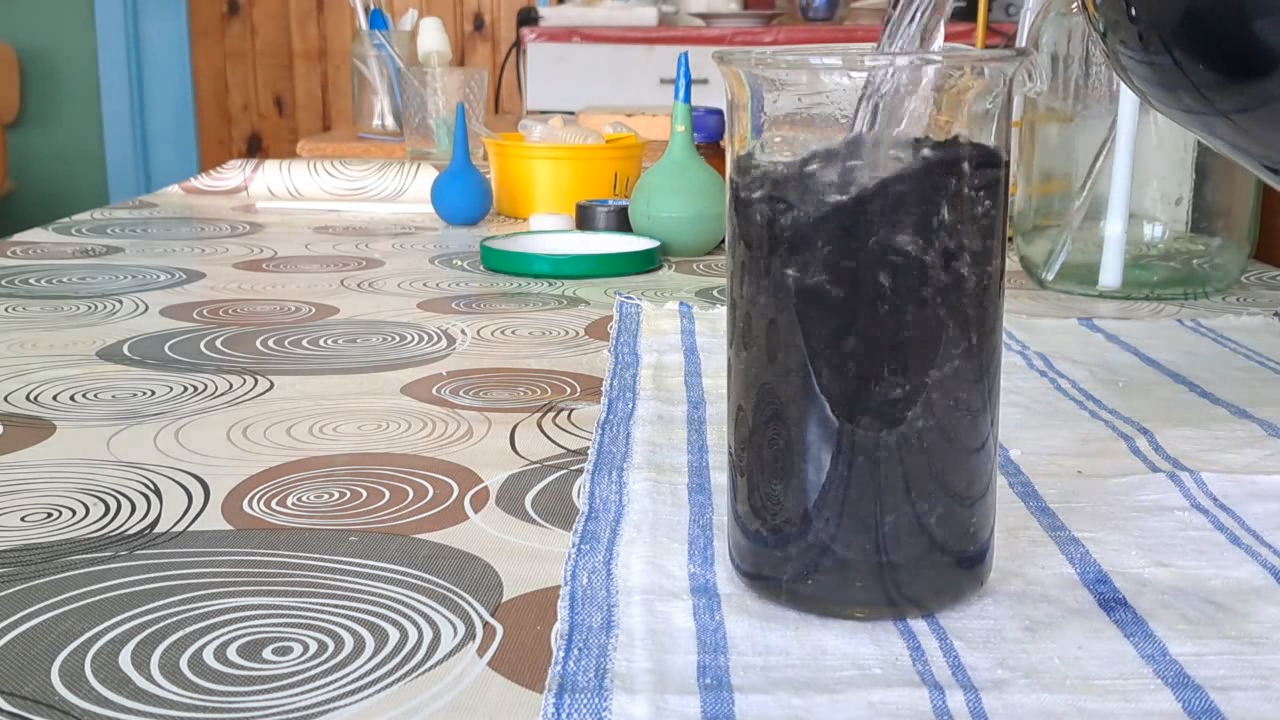
|

|
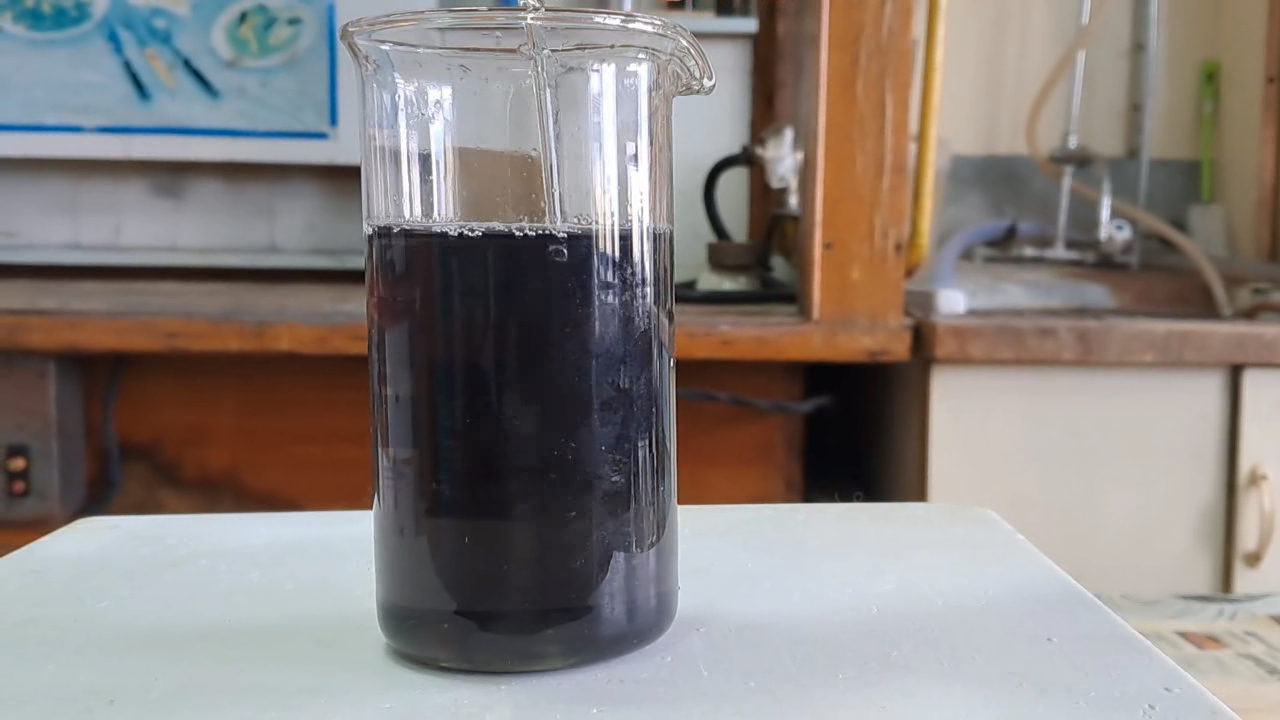
|
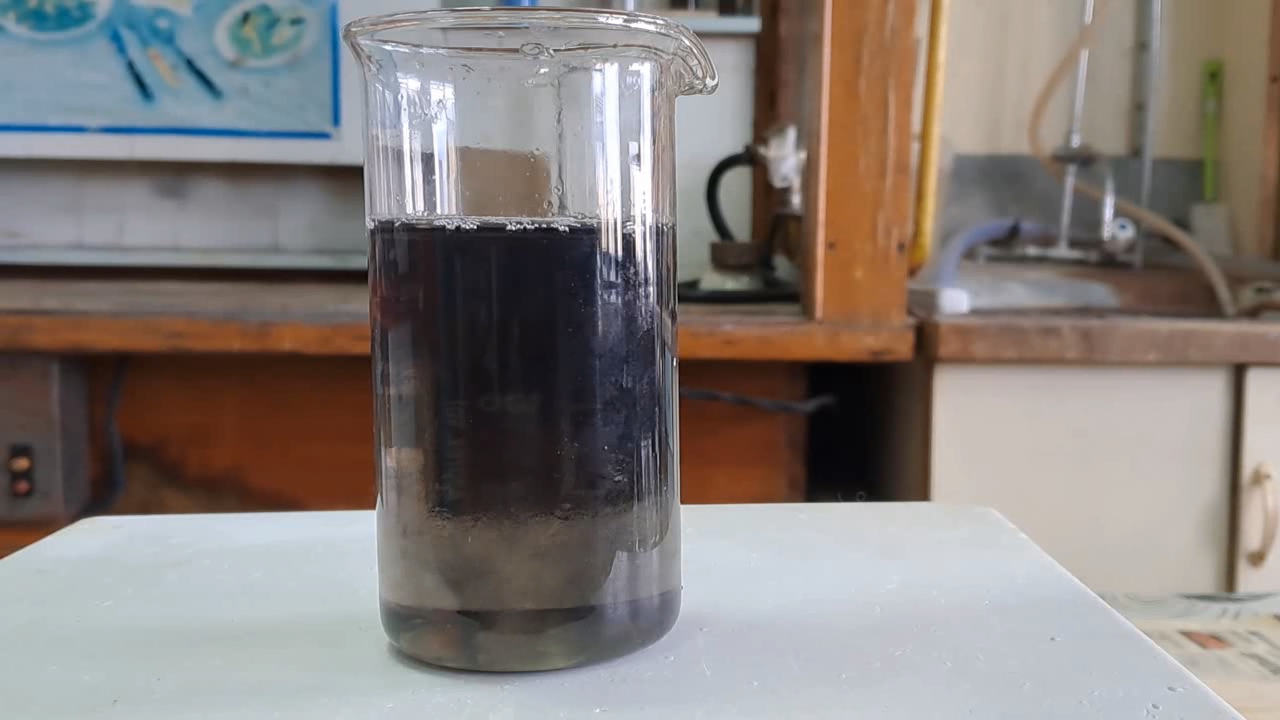
|
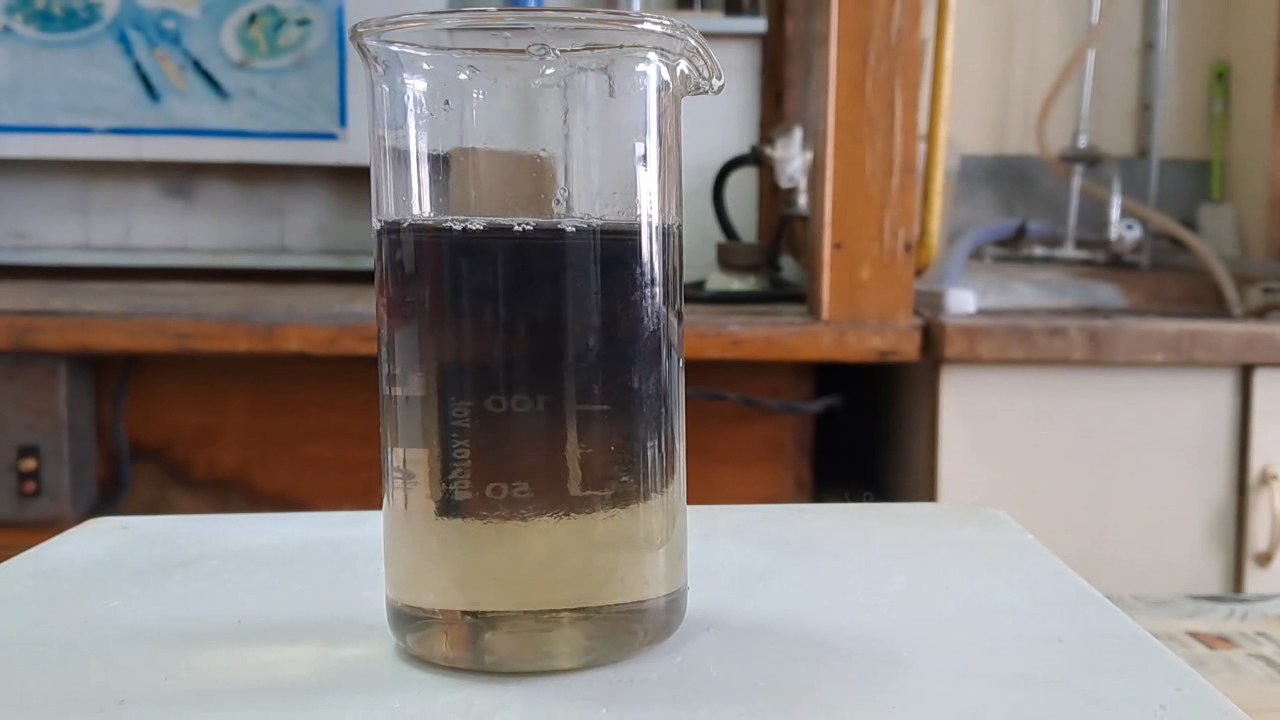
|
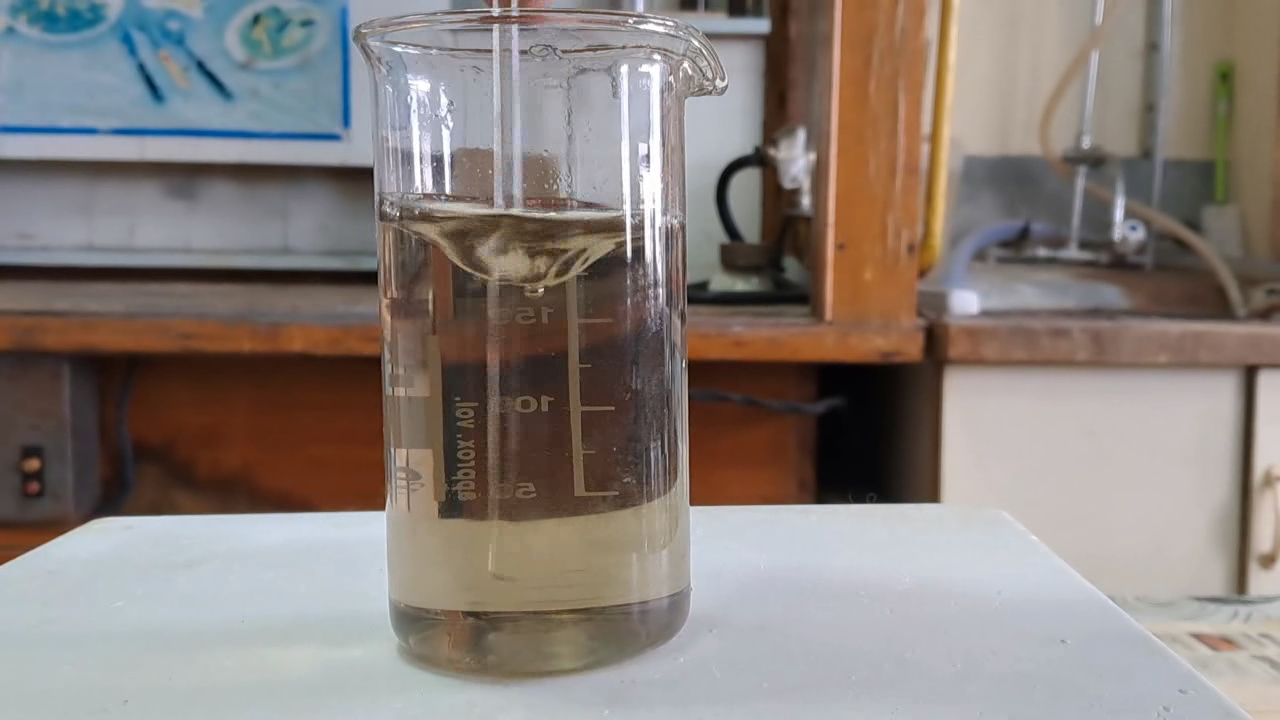
|

|

|
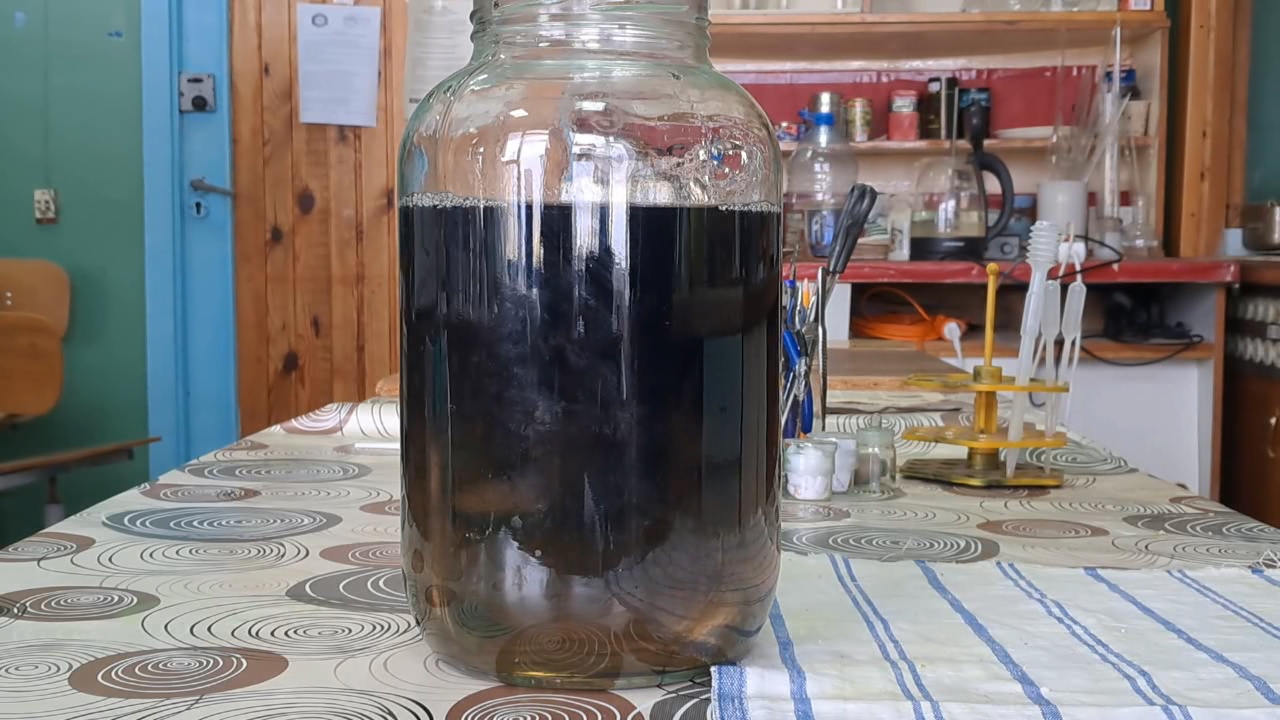
|
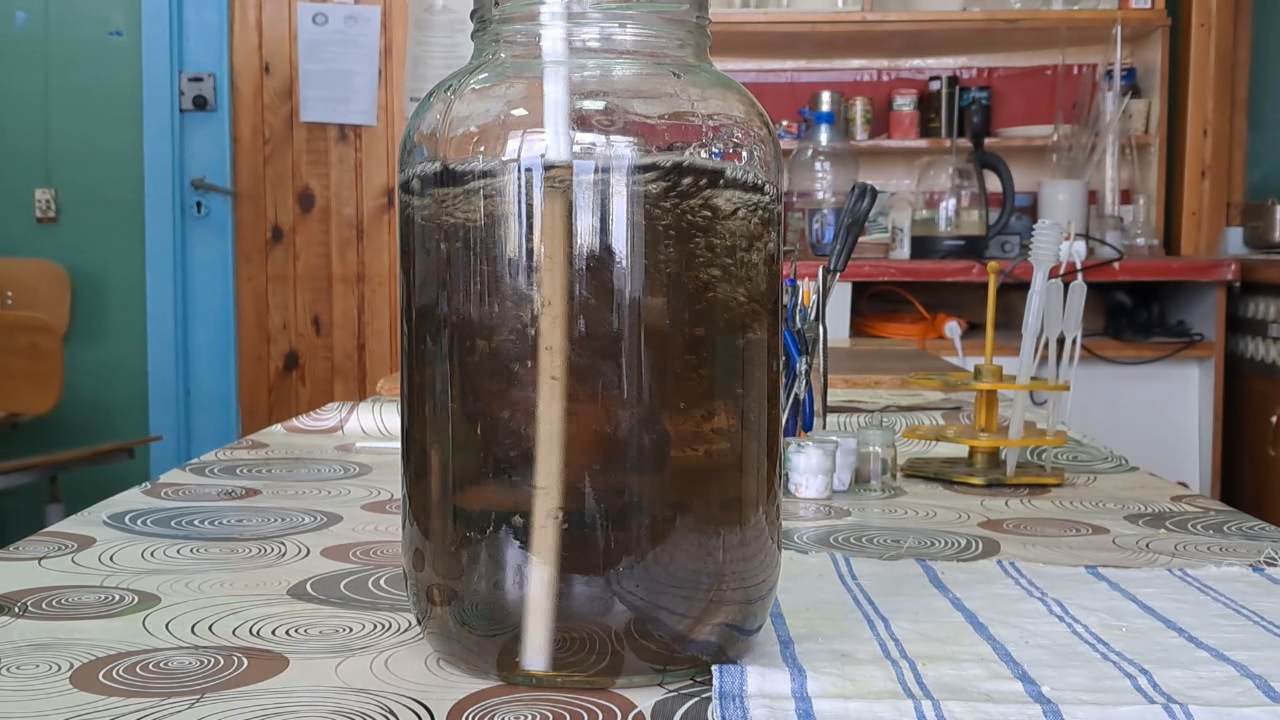
|

|
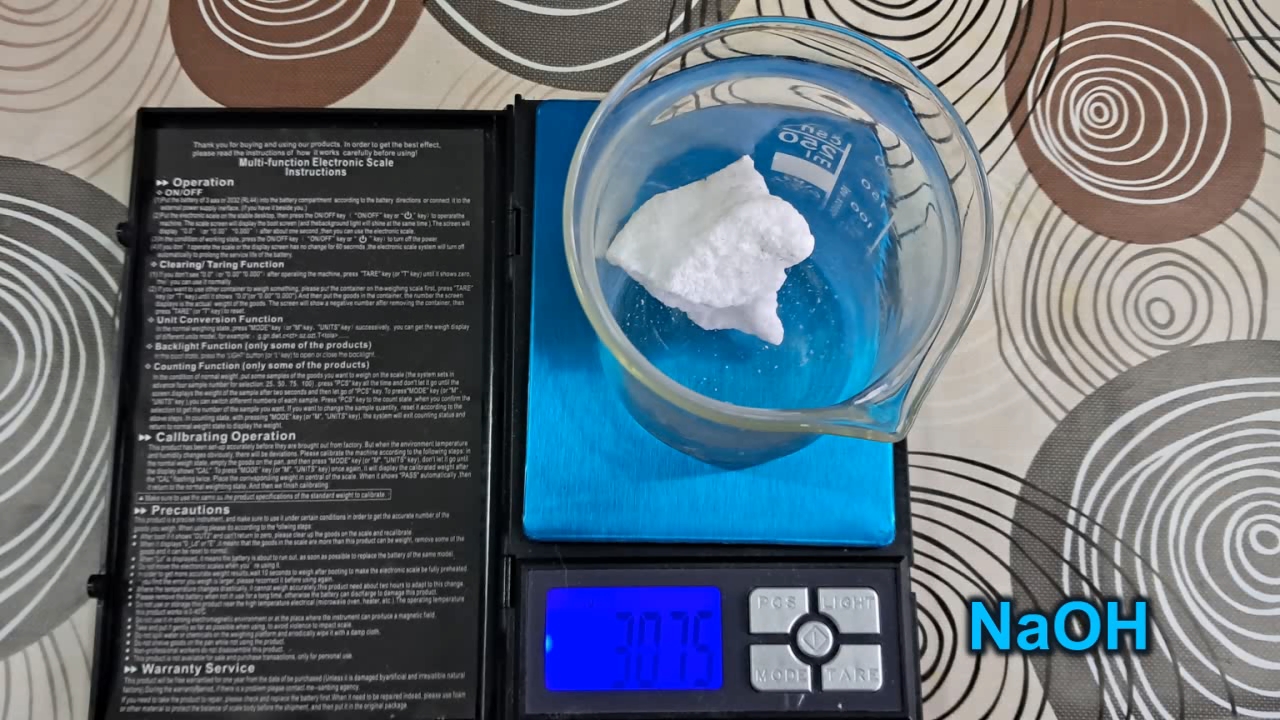
|

|
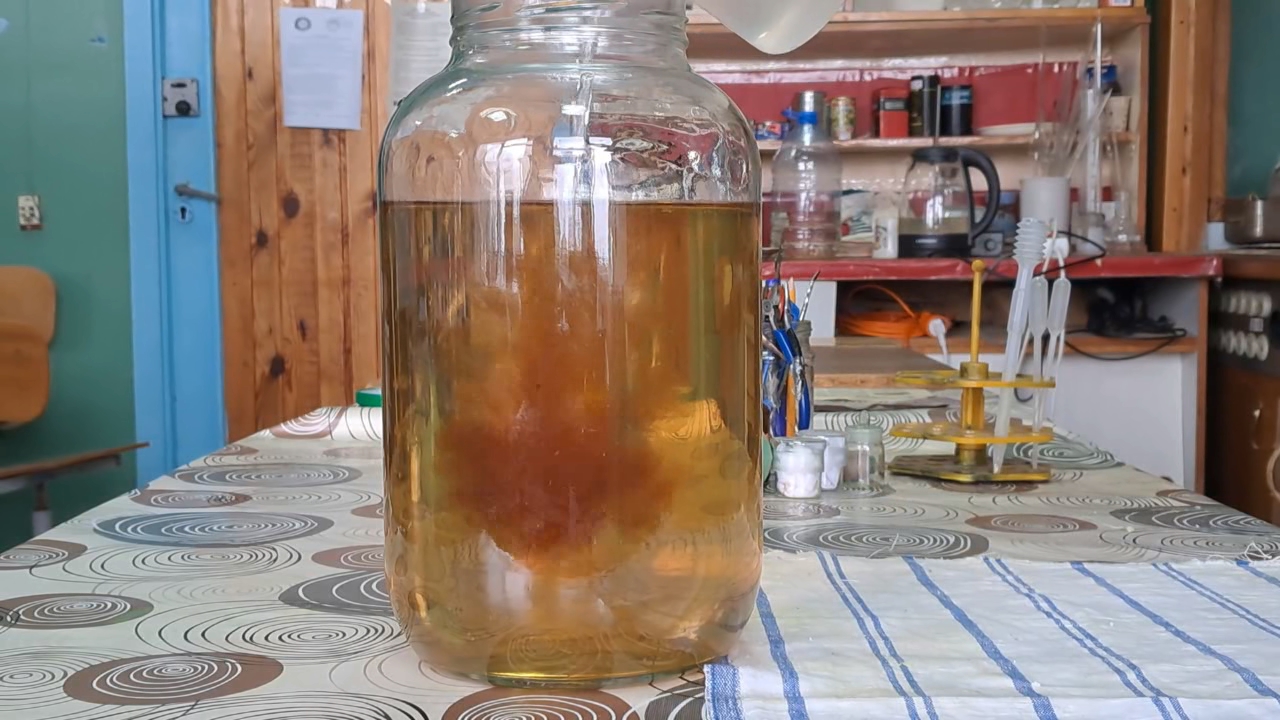
|
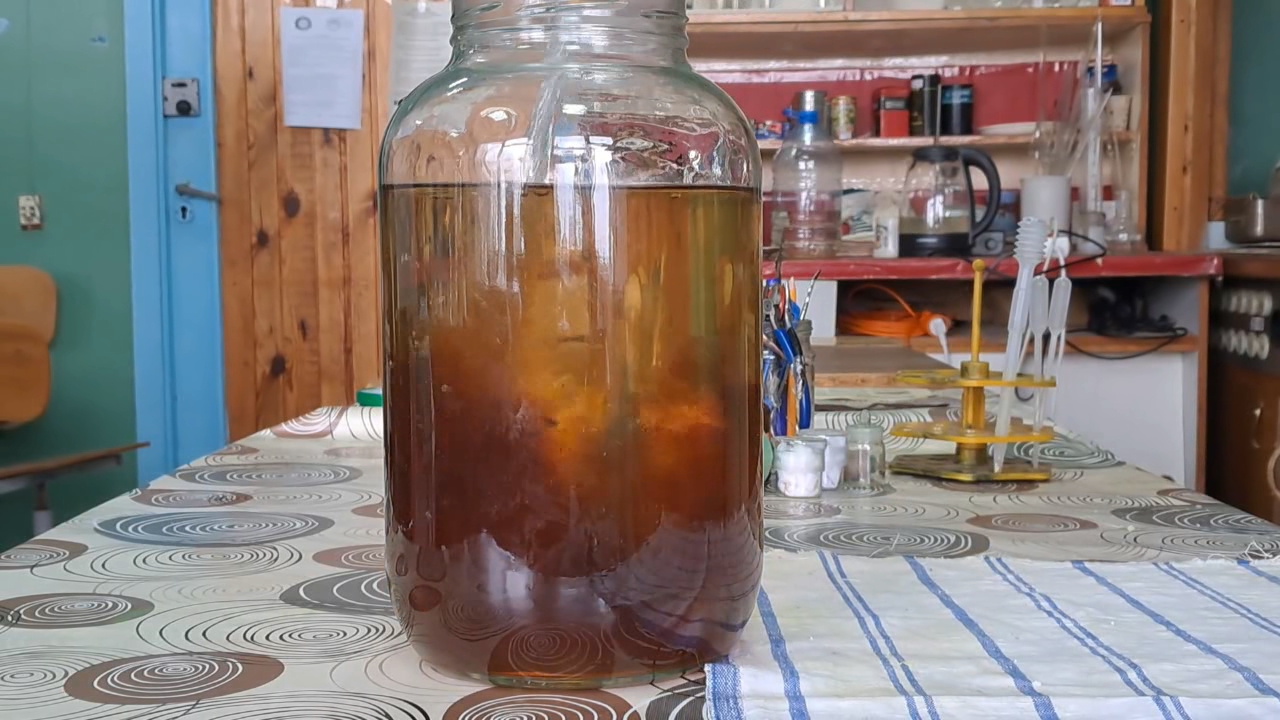
|
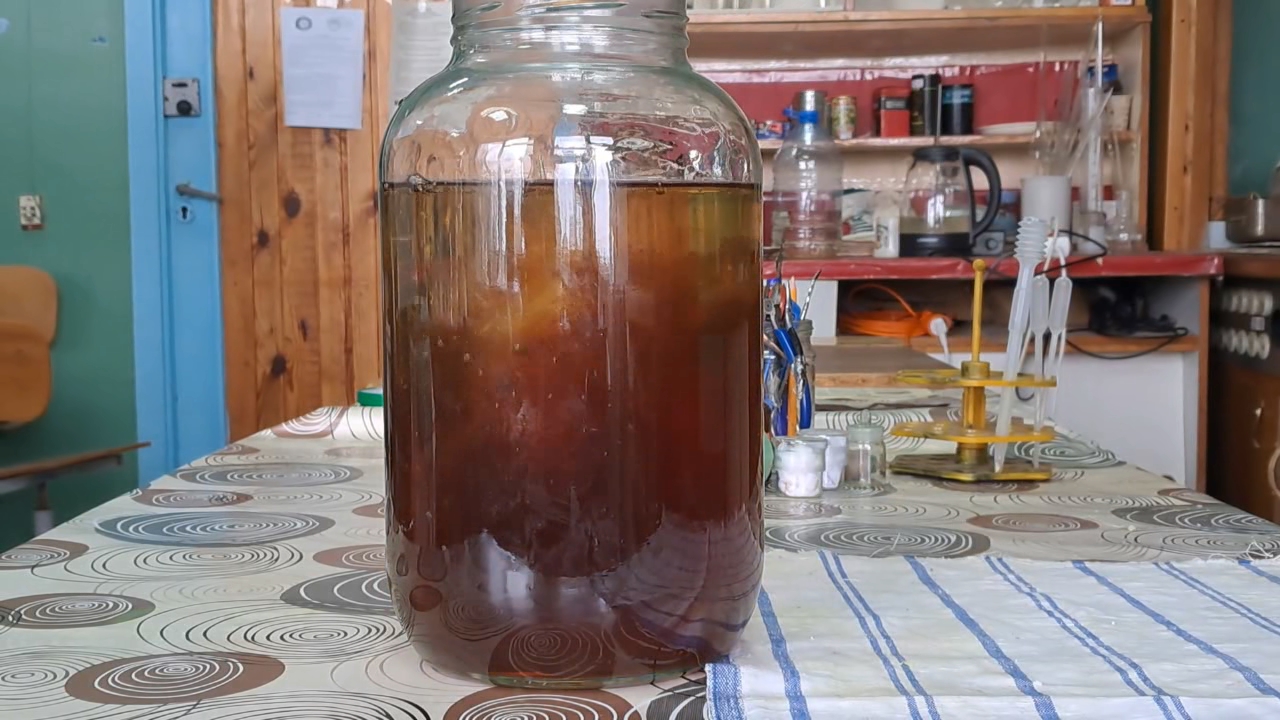
|
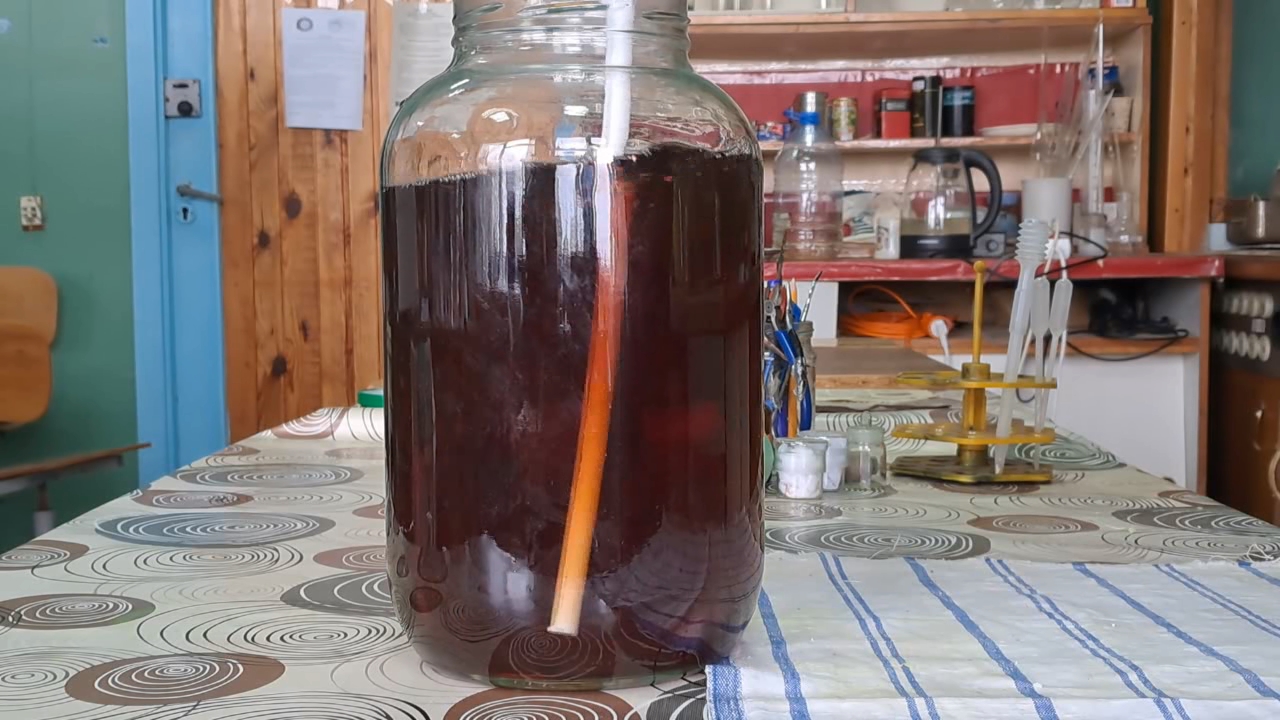
|
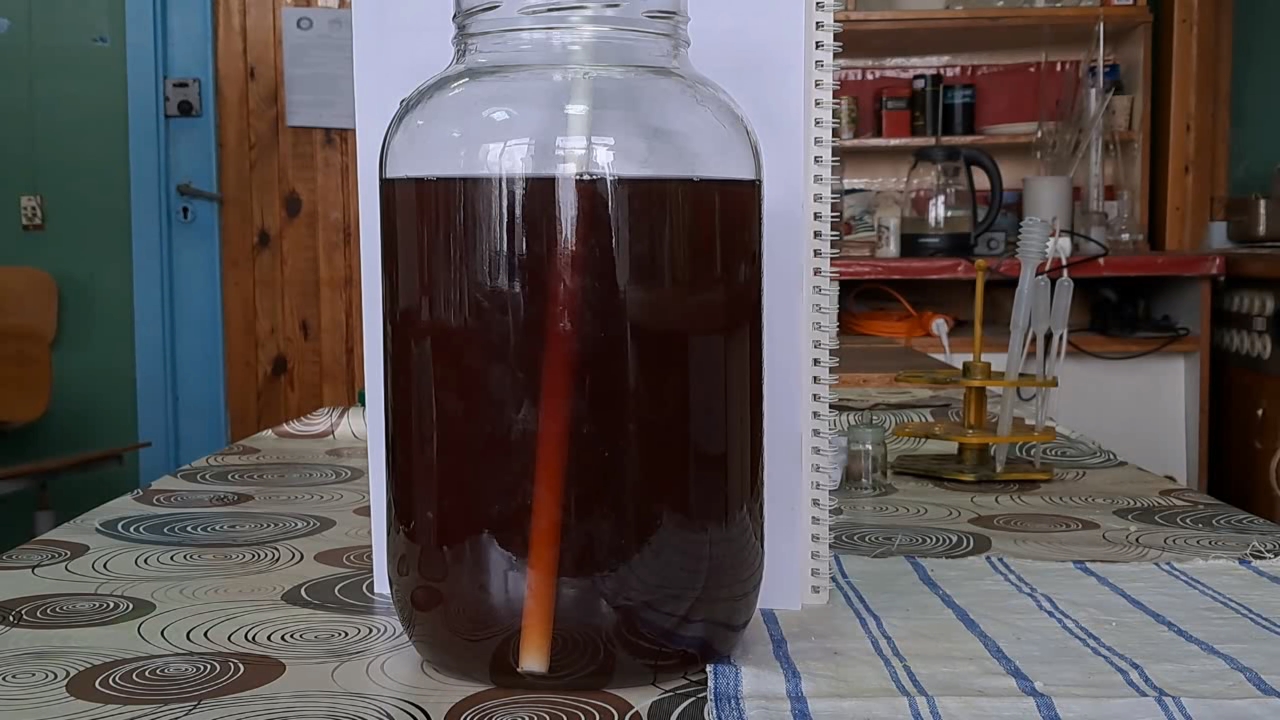
|